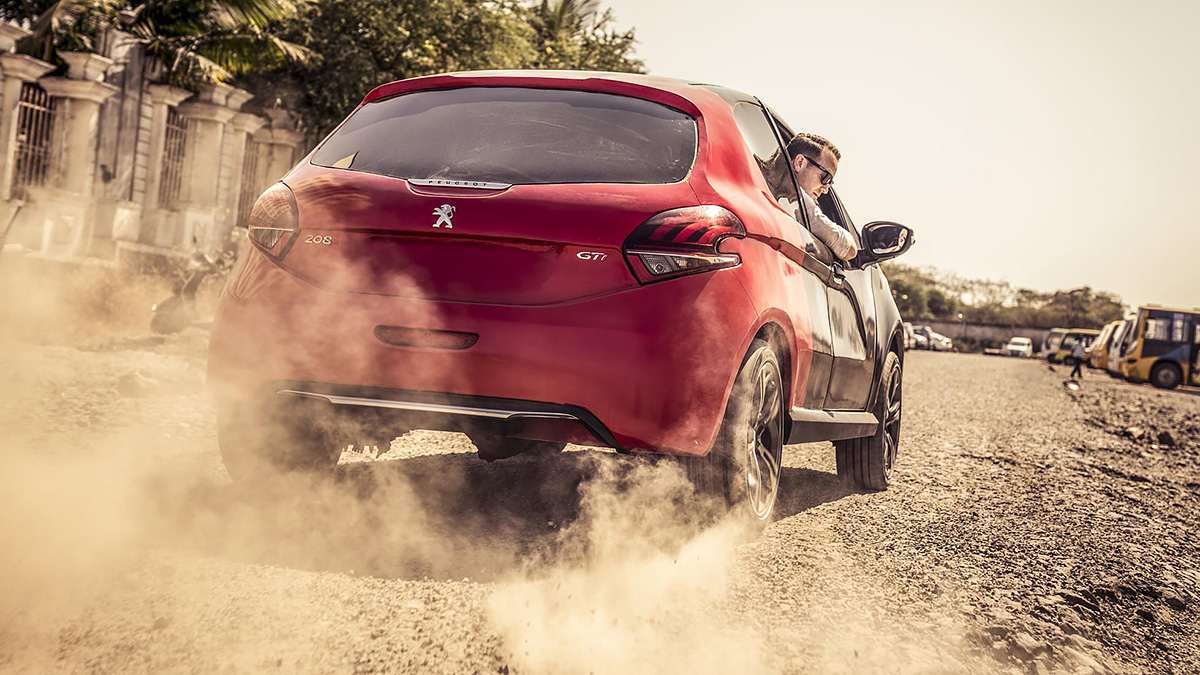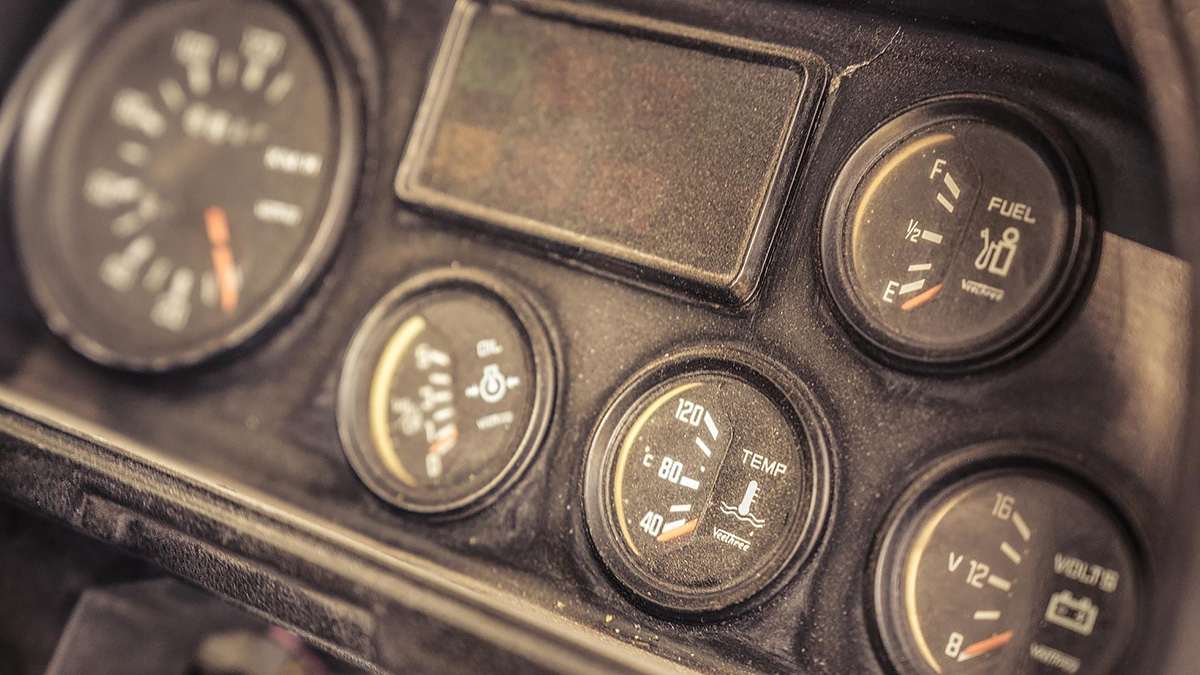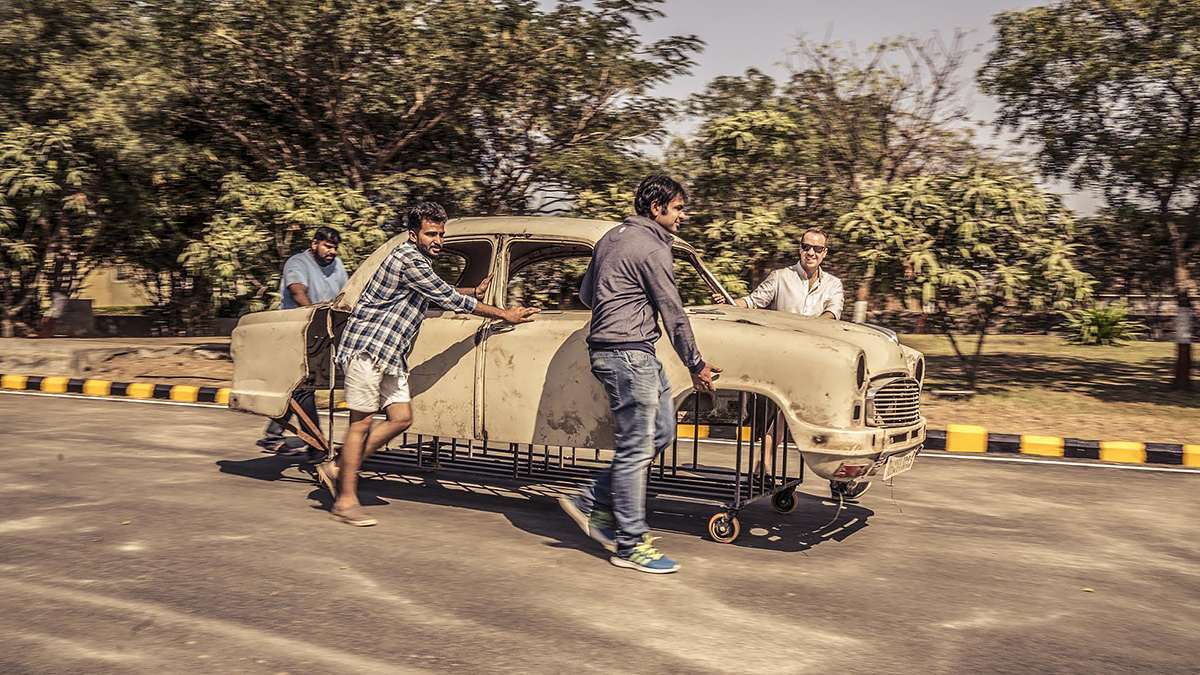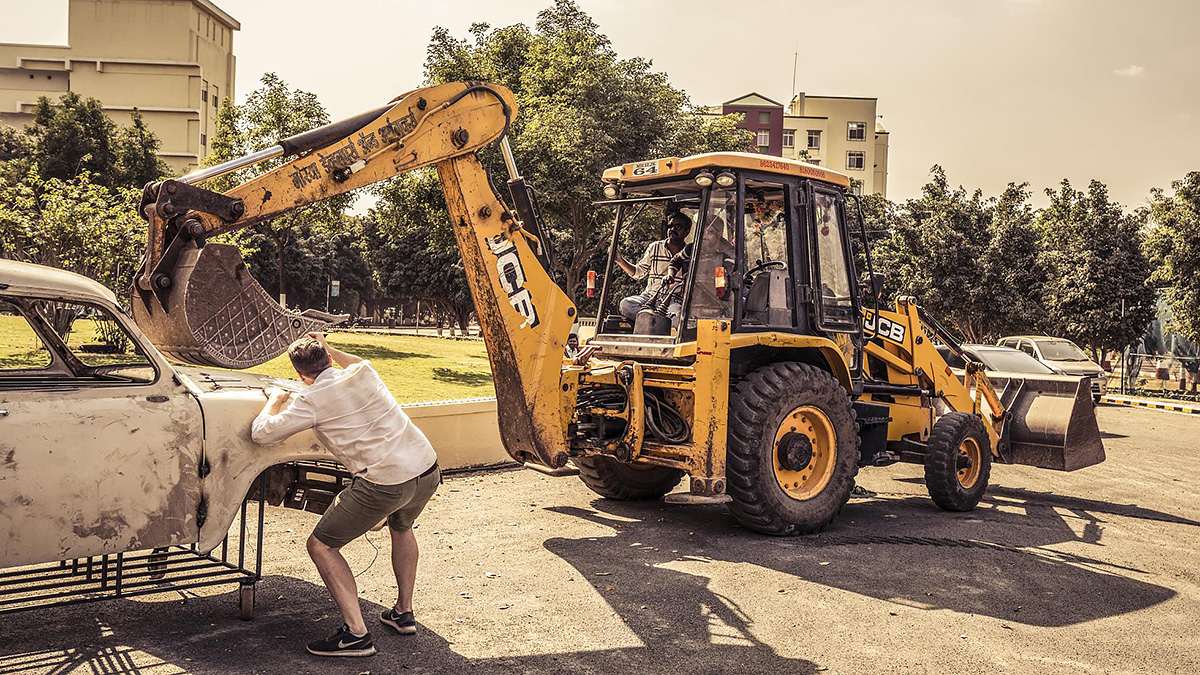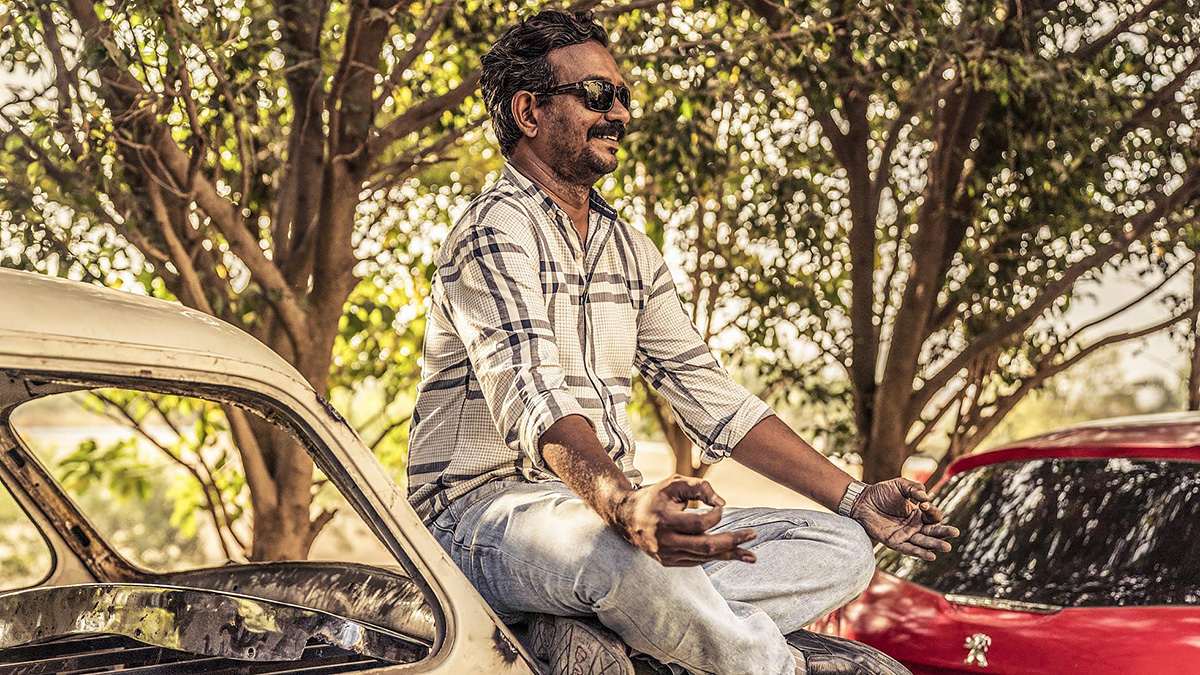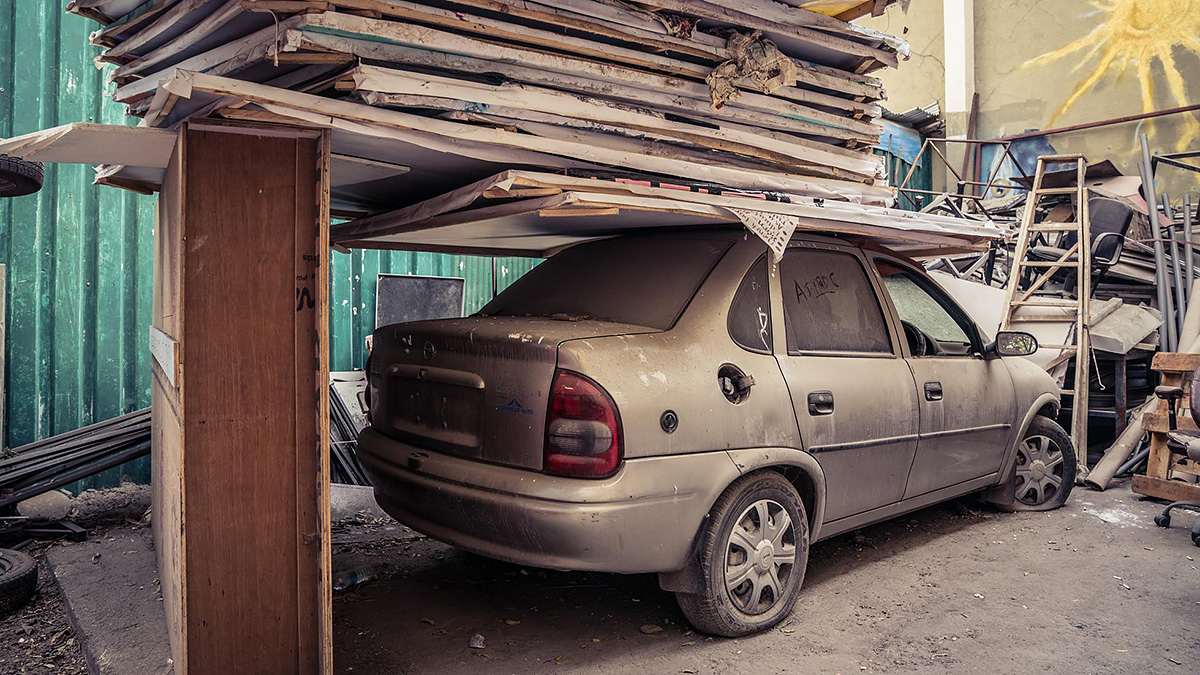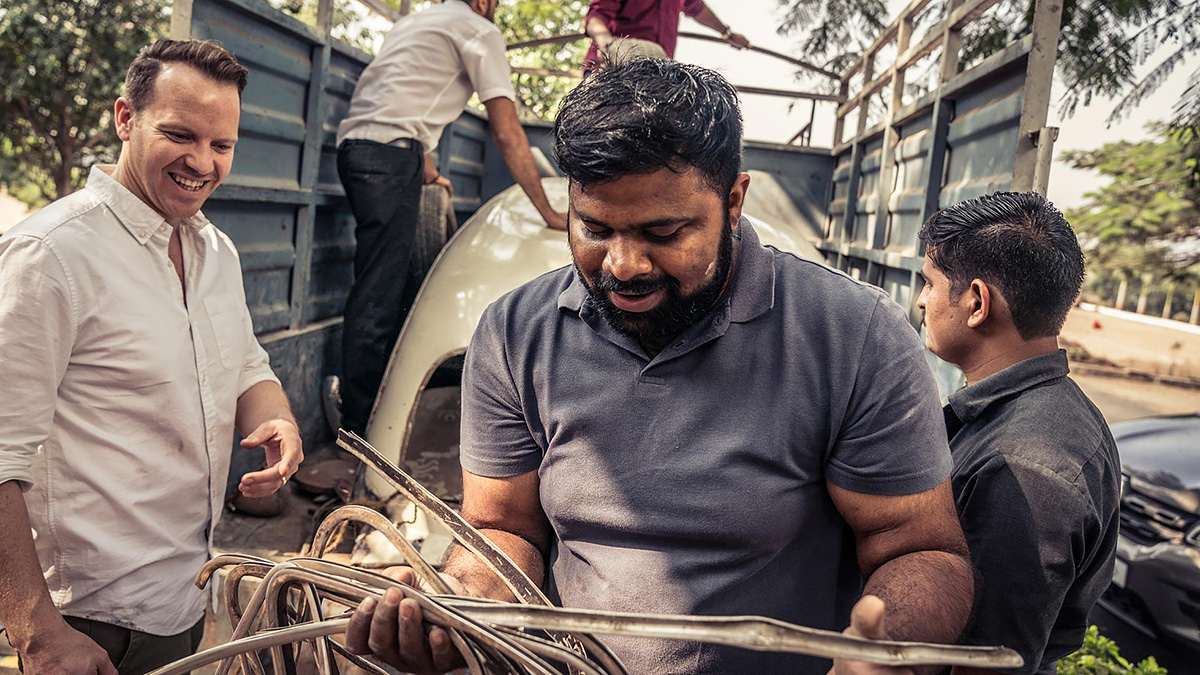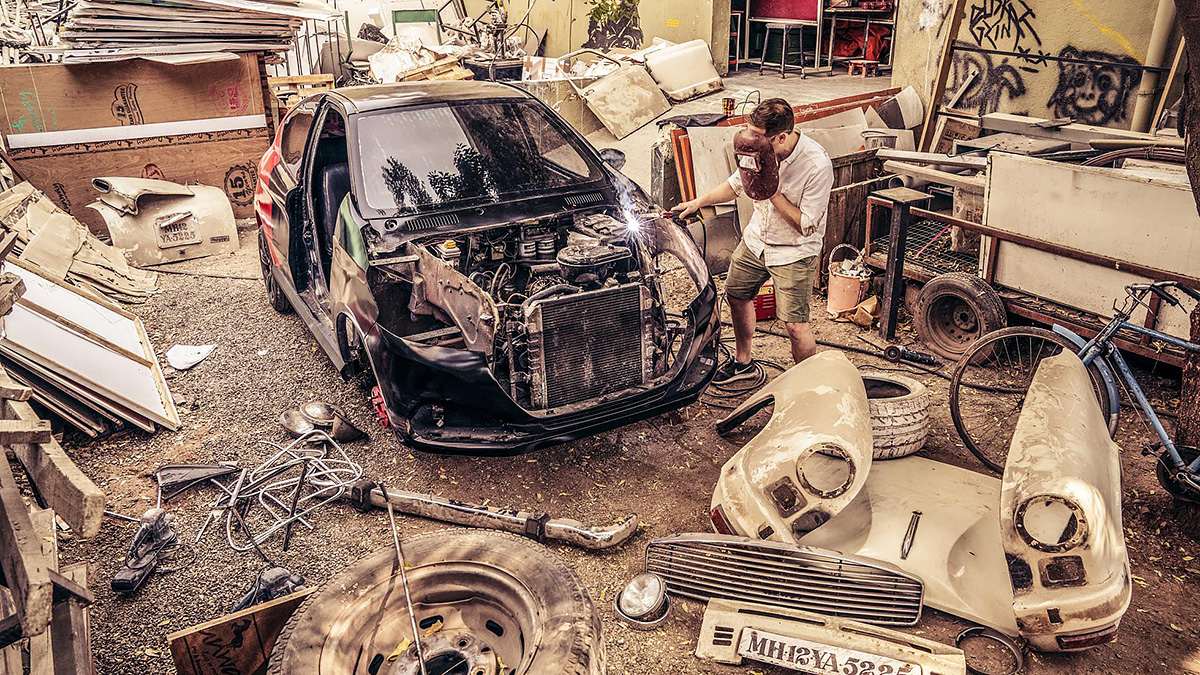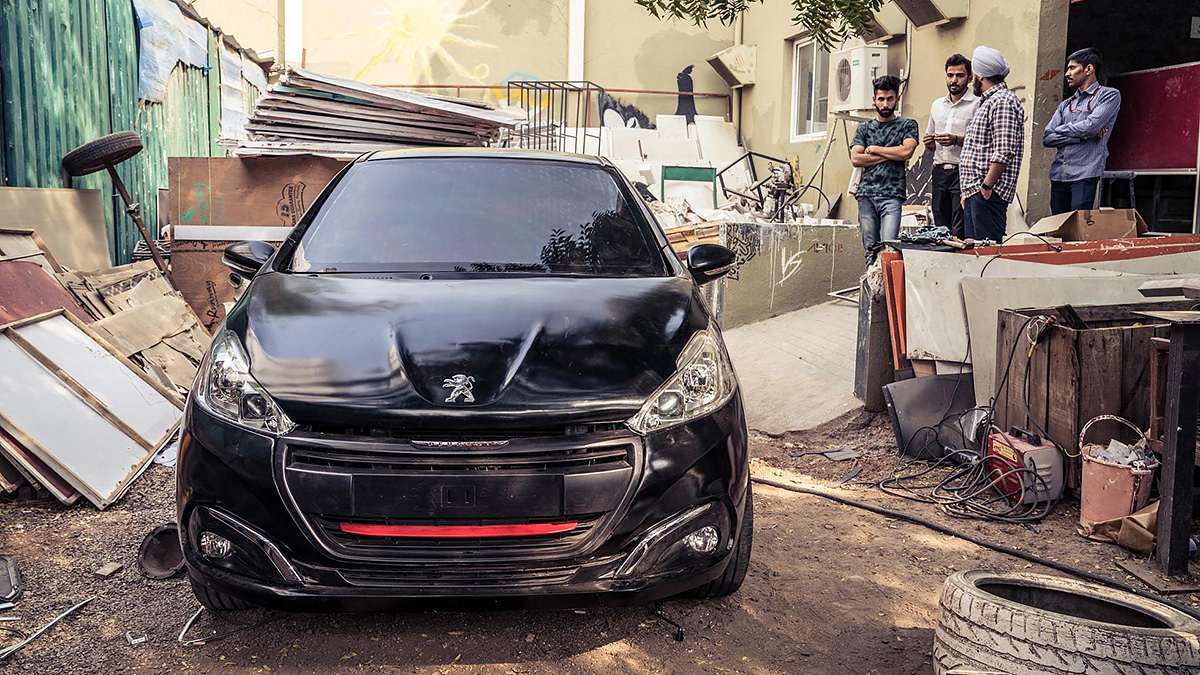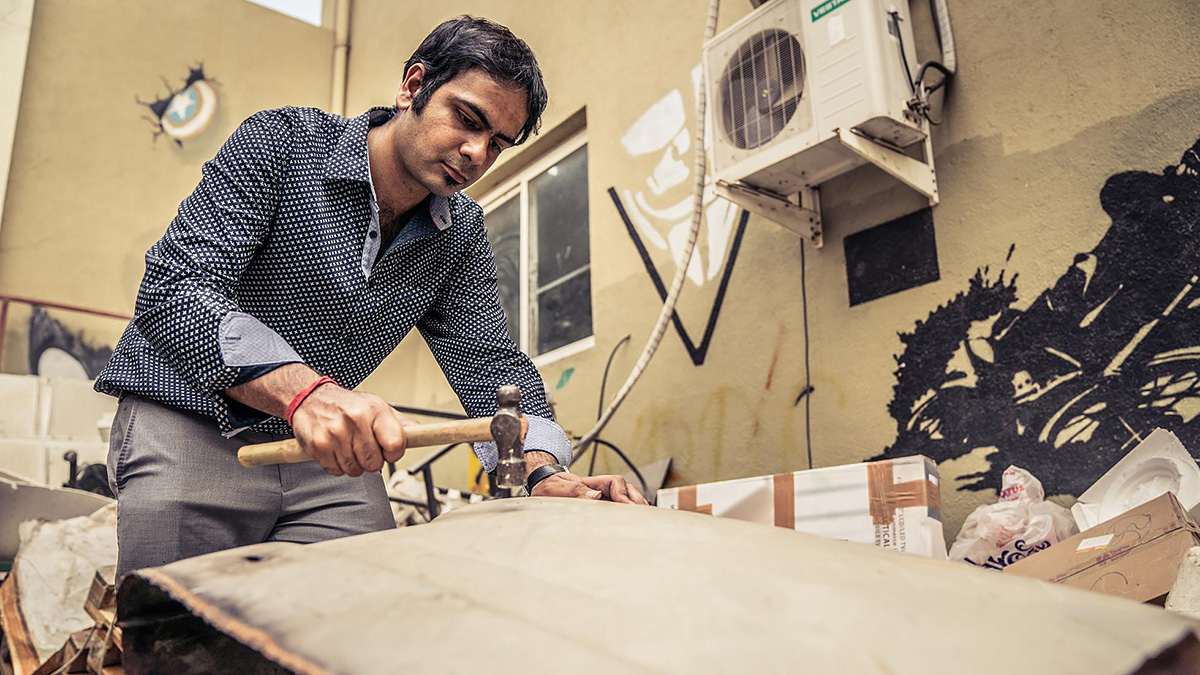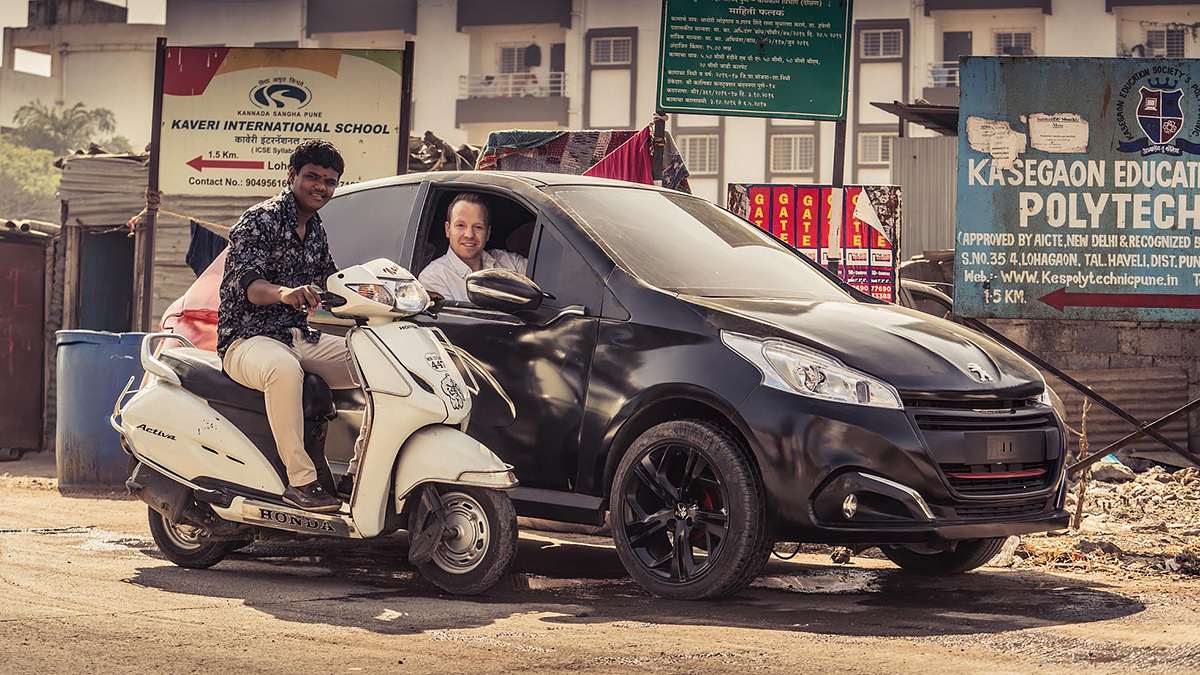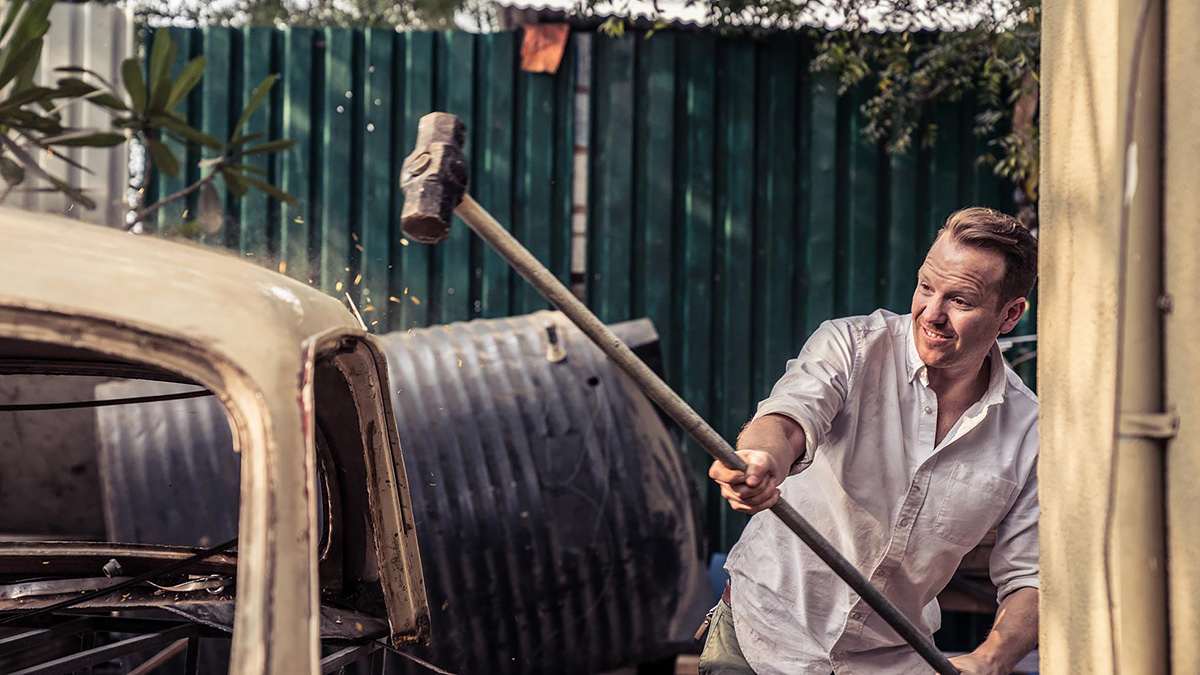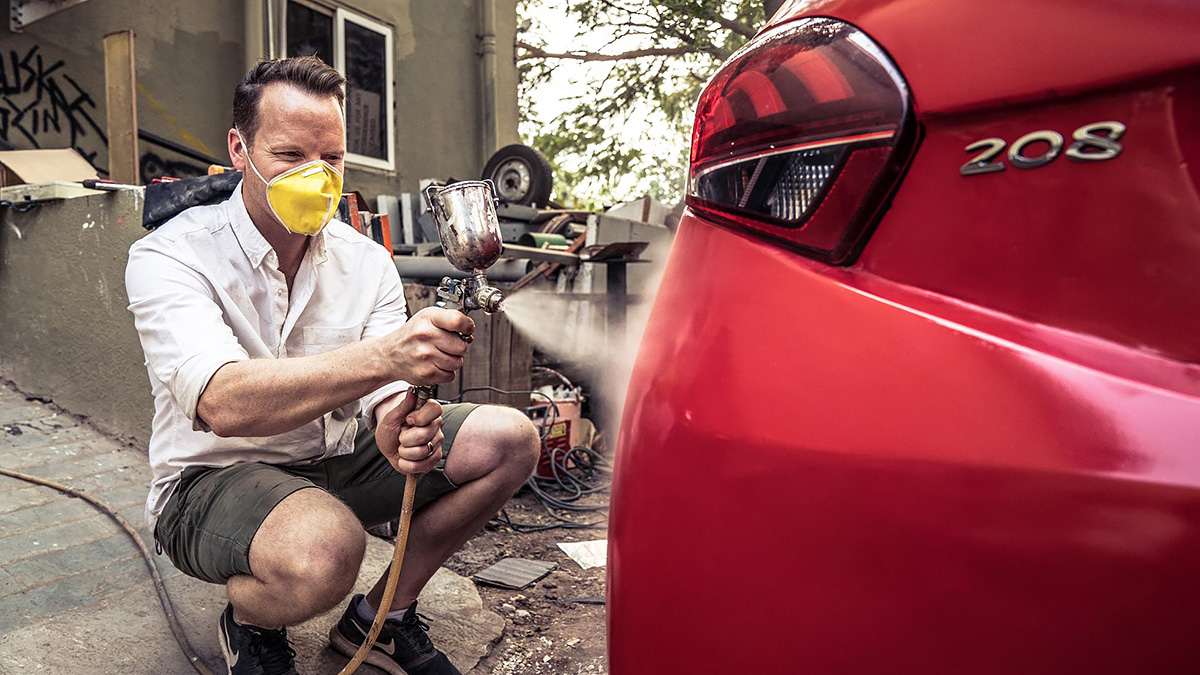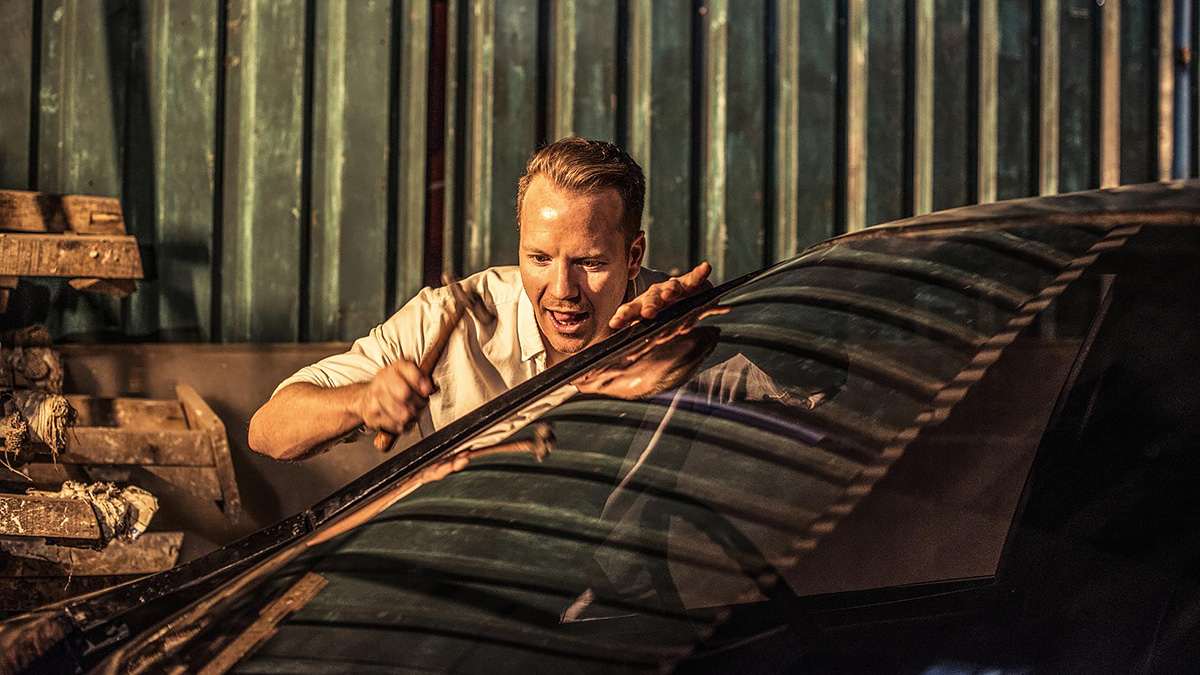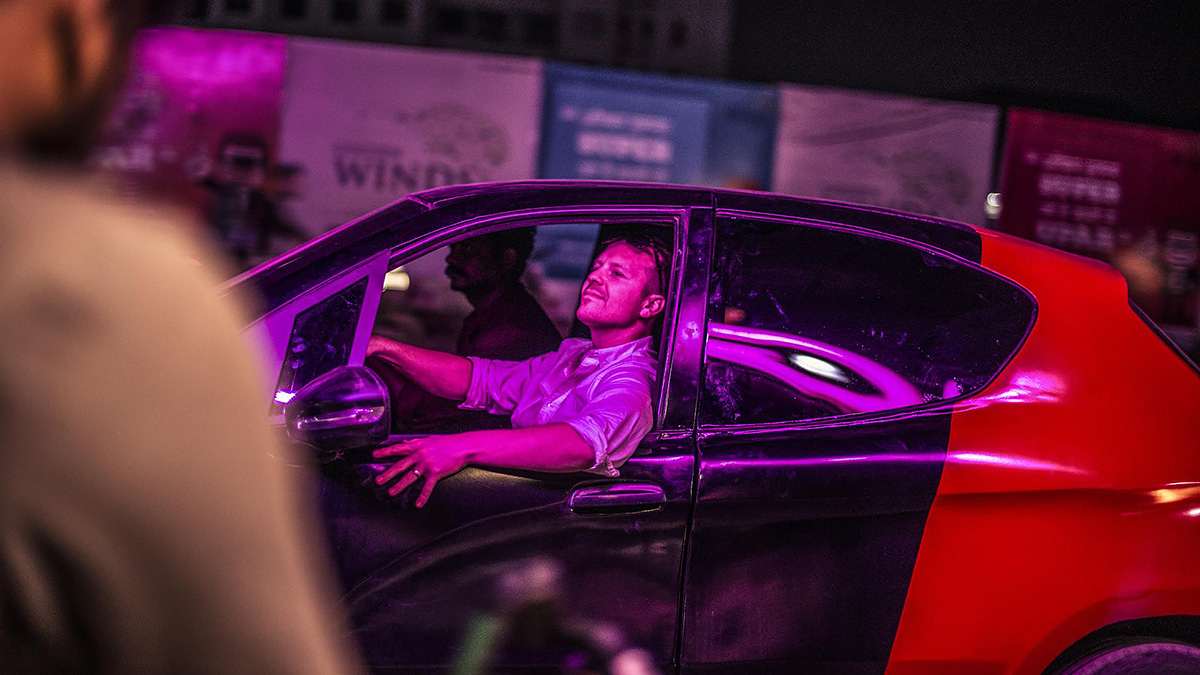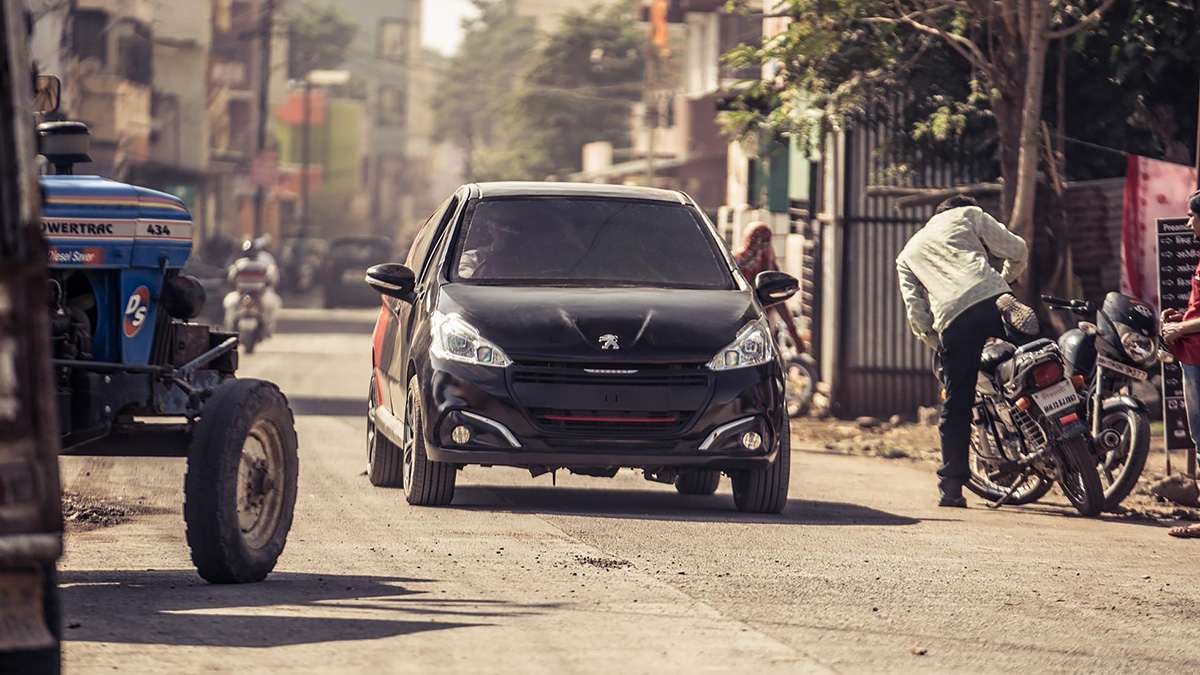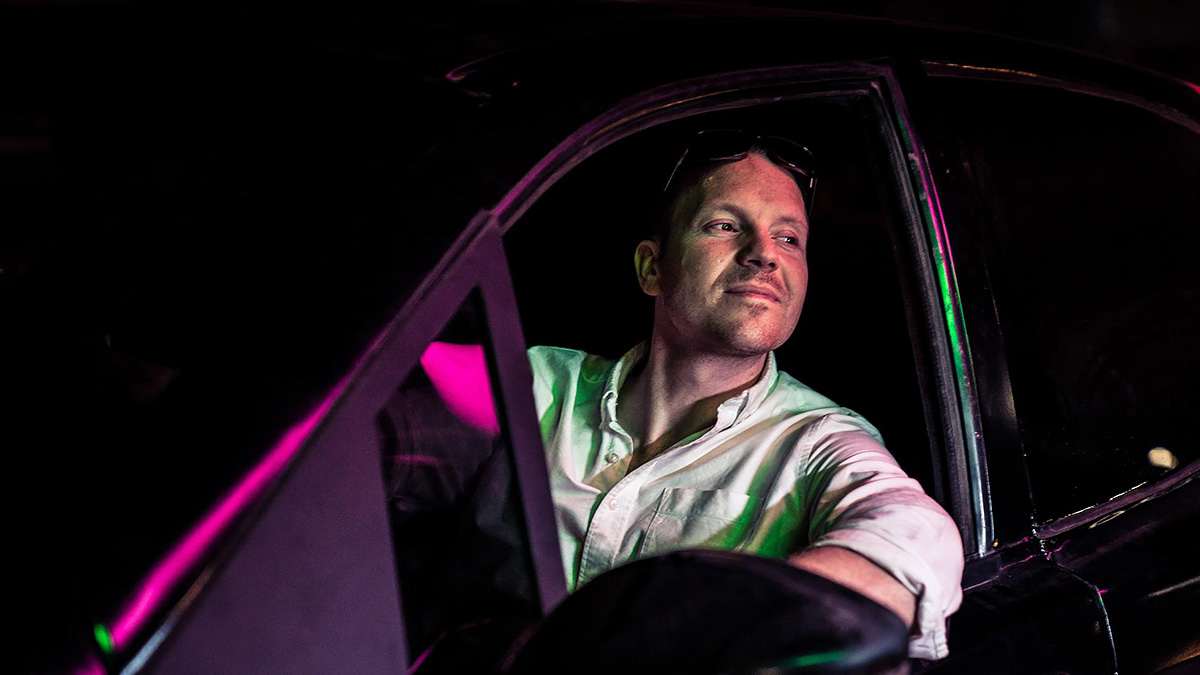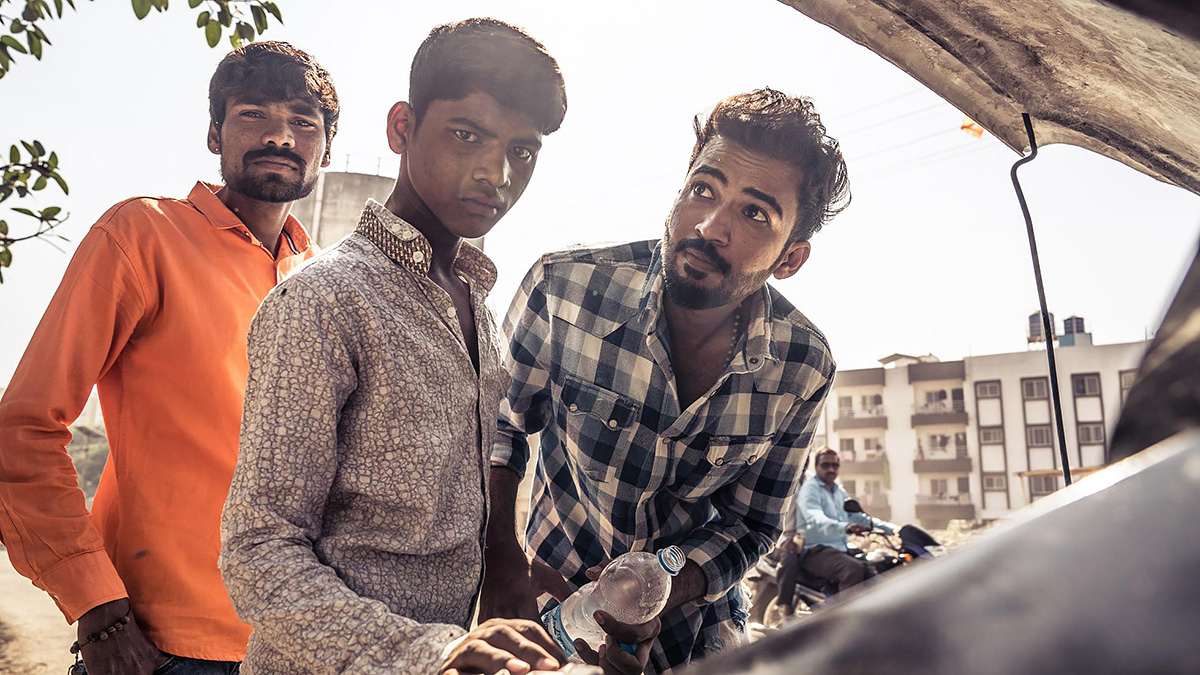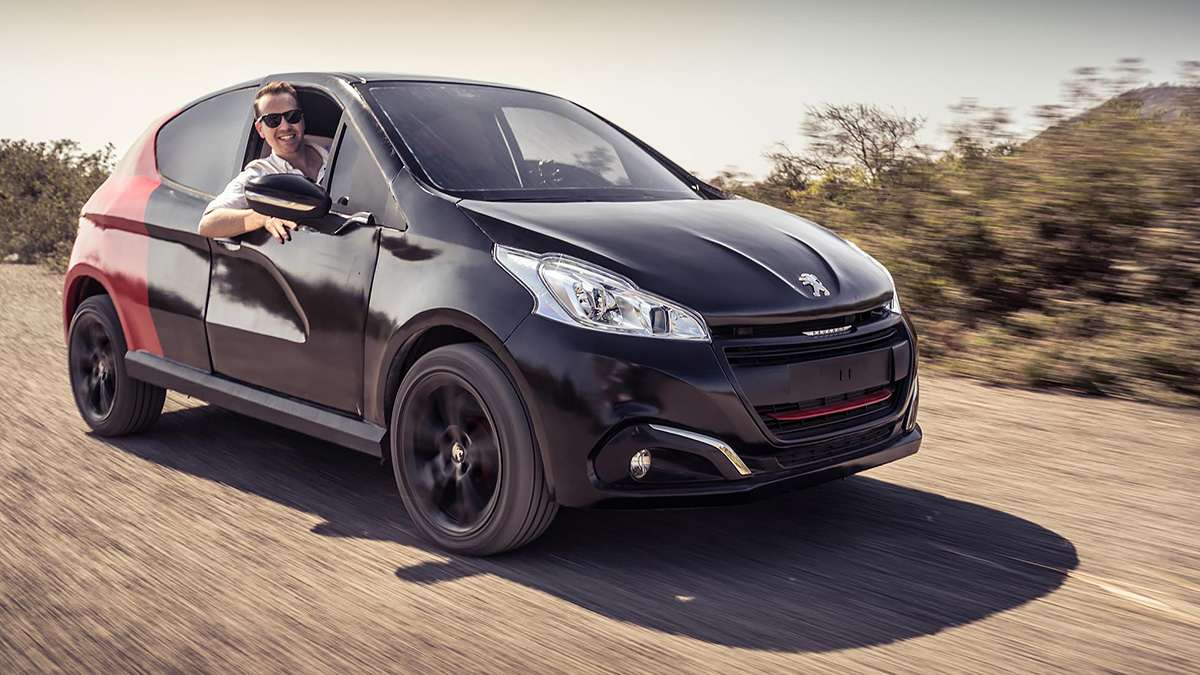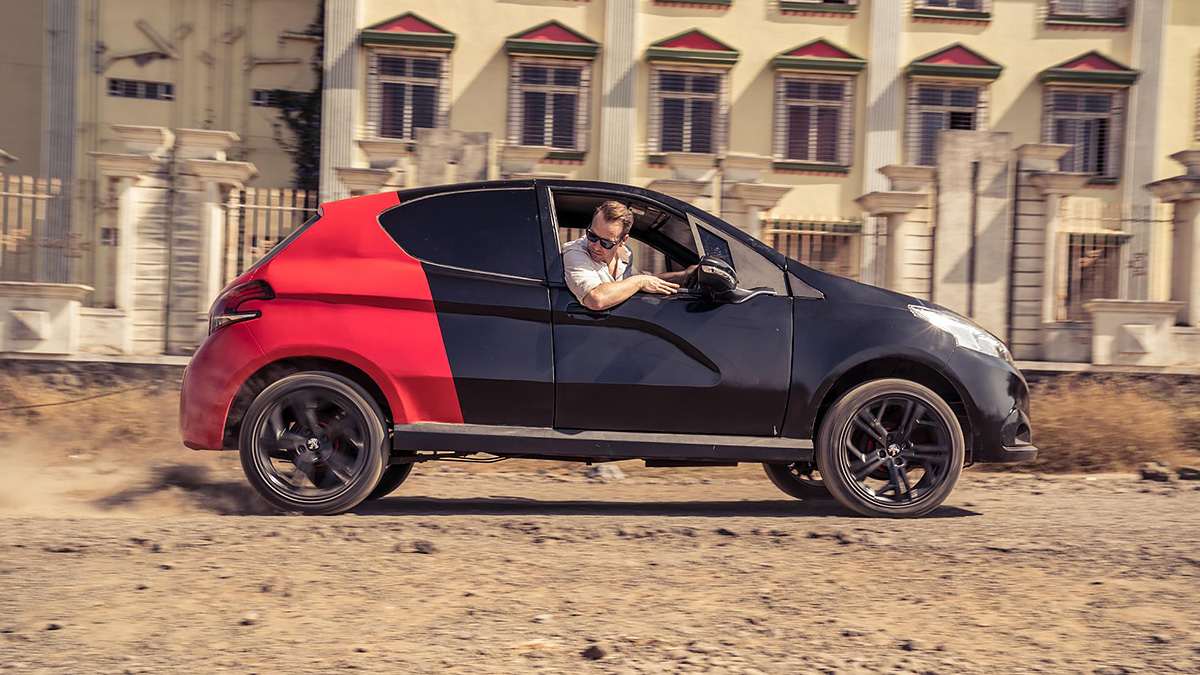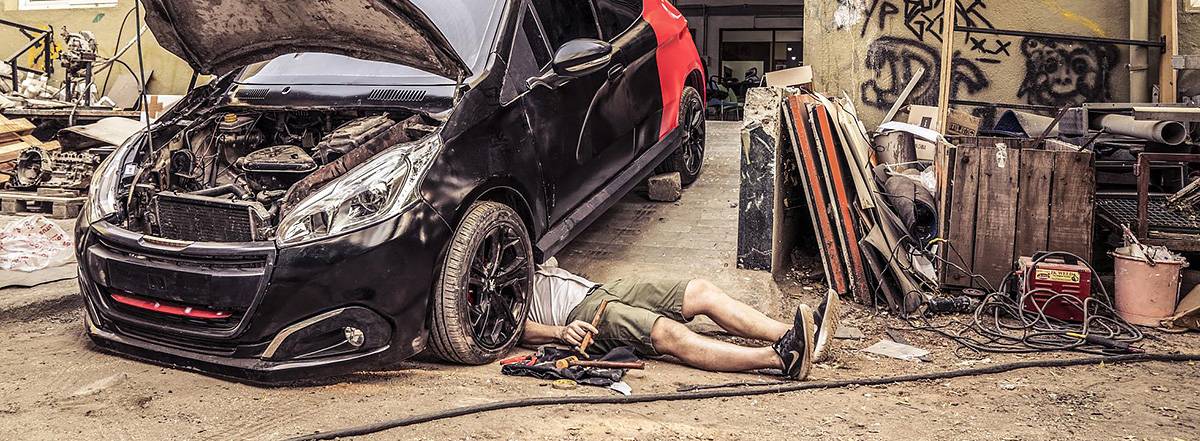
Ashish Nar, a teacher of car design by trade, has slipped into the role of acting coach with surprising relish. “No no no. It’s bob, bob, bob… hi there,” he says slapping his hands together, nodding his head and raising his chin in sync with one eyebrow, while fixing me with the laser stare of a seasoned Bollywood director. Rewind an hour and we’re working on the head wobble: “Jack, you’re in love with this car; it’s side to side to side, half smile and open those eyes.” He demonstrates, complete with jazz hands to finish.
I try to fathom how my life has led me to this particular moment, stood in a dusty car park in Pune, India, surrounded by cameras and slightly disappointed faces, and can’t. So let’s start from the start, where we find an acorn of an idea. Early 2017, and Peugeot has just purchased the rights to the Ambassador name from Hindustan in a deal worth around £9m. The Hindustan Ambassador, if you’re not familiar, is the car that got India rolling – based on the Morris Oxford and built between 1948 and 2014, it received various mechanical upgrades over the years, but kept the same delightfully old-fashioned three-box body.
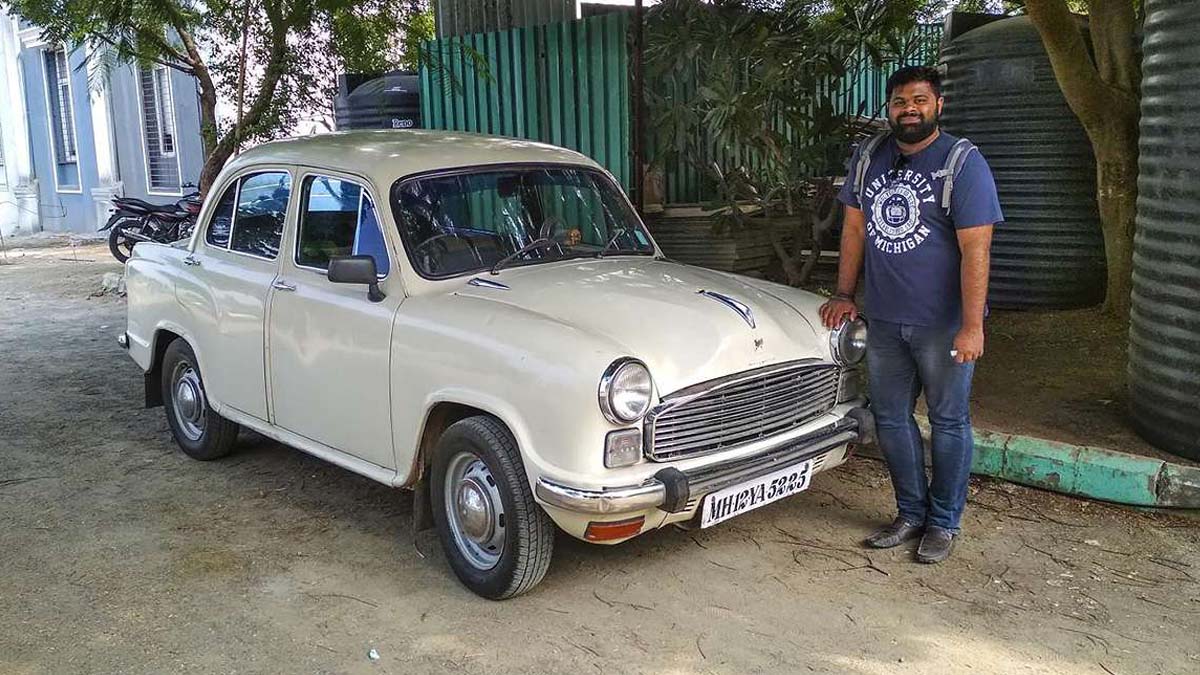
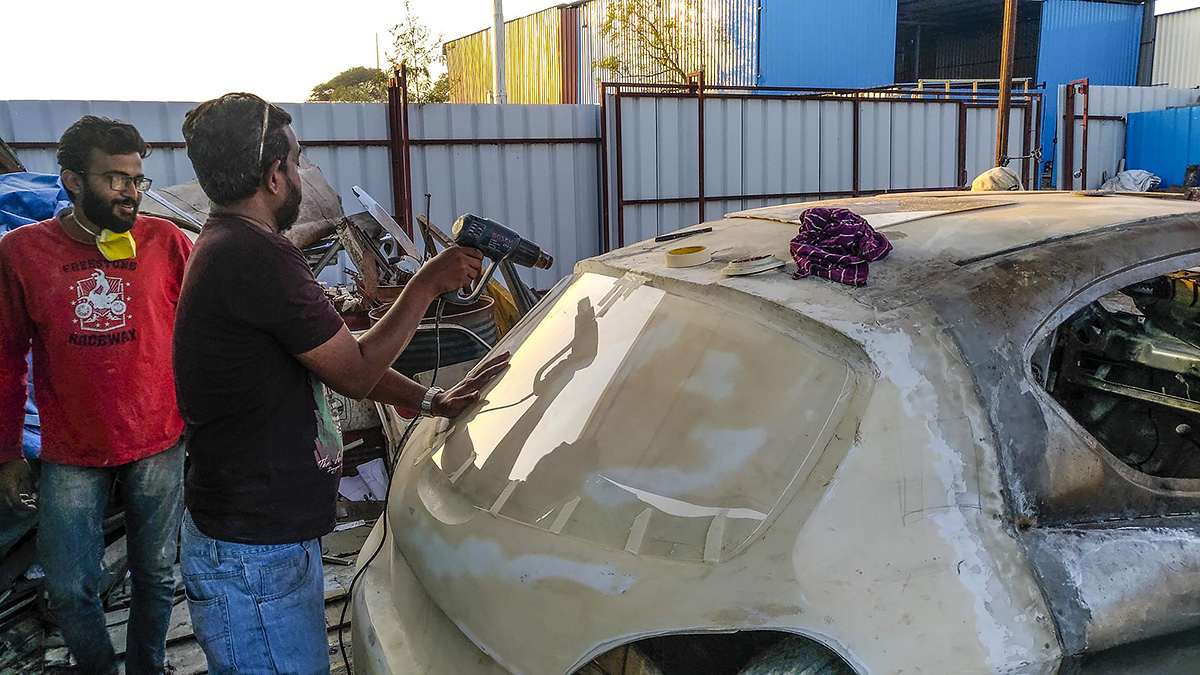

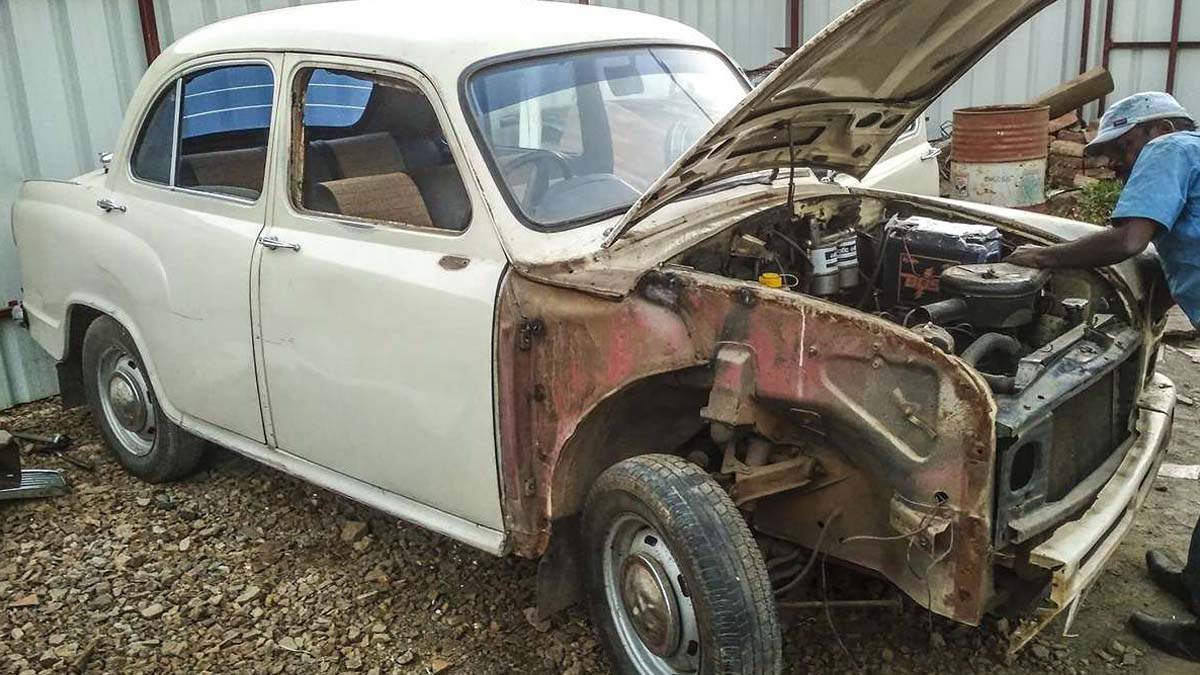
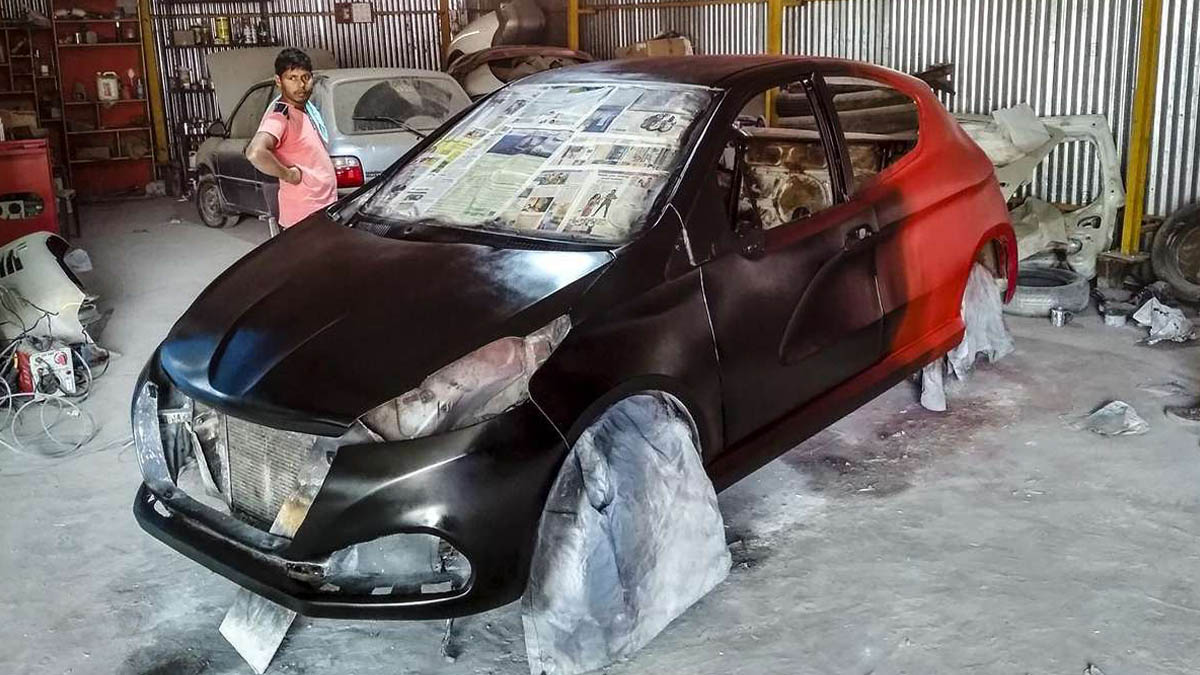




Where once they choked India’s cities, now, just four years after production ceased, Ambassadors are rarer than McDonald’s Szechuan sauce, used only by a handful of nostalgic private owners and government officials. I digress. The point is Peugeot’s acquisition sparked a memory, a recollection of elephants and sledgehammers and a stirring Indian soundtrack. You may recall a Peugeot 206 advert first shown in 2003, where an Indian chap takes a shine to the 206, so he sets about smashing and crushing a Hindustan Ambassador with the help of a large animal, a wall and various tools until it’s an approximation of the 206… at which point he drives around town grinning like a dog with two appendages.
If you haven’t seen it, shame on you. It’s without doubt the summit of car advertising (see inset), matched only by Mercedes’ Magic Ride Control chickens and that time Honda fiddled around with some cogs. But it’s not perfect, at least in my eyes, because the star car is nothing more than an unpainted, dimpled 206 pulled from the production line. What if, I pondered, you could actually convert an Ambassador into the 206’s modern equivalent, a 208? Specifically, a 208 GTI?
A few phone calls, several meetings and some top-drawer persuasion – that this definitely wasn’t just a costly and pointless exercise, it was about the spirit of human endeavour – and I had the green light. All that was left was sourcing a donor Ambassador and finding somebody, anybody, in India mad enough to take the project on. Enter the automotive design department of Ajeenkya DY Patil University in Pune, who, for some unknown reason, felt confident it could be done. We sent them photos of the 208 GTI, a handful of genuine 208 GTI components (headlights, grille, wheels, tail-lights, wing mirrors and badges) and braced ourselves for the mayhem about to unfold.
For the next three months, videos and photos arrived in my inbox, updating me on the progress of the build. I leant back in my chair in London, a satisfied smile slapped across my face for having such a marvellous idea and that the whole thing was going so smoothly. Clearly, I’m a fraud – all the back-breaking work, all the long nights bent over a hot welding iron, all the boundless resourcefulness required to force an Ambassasor through a 208-shaped die, were the team in Pune – teachers Ashish Nar and Kushal Jadhav, plus students Parth Dodiya and Sidharth Rath who took on the project as part of their course.
I have a deep-seated and peculiar fear about all this – that the finished product will look too good, too polished, too much like a Peugeot 208 GTI
Today, though, that’s about to change. I’m in Pune to personally put the finishing touches to the project… by which I mean embarrassing myself with a spanner and sticking the badges on. I’m also here to film a shot-for-shot remake of the 47-second-long advert, starring yours truly and our finished Ambassador-based Peugeot 208 GTI. Let’s call it the Pambassador for ease and amusement.
Back to the car, because I’m standing in front of it. The covers are about to be whipped off, and most of the university, the majority of whom have lent a hand in some shape or form, has gathered to gauge my reaction. I’m visibly nervous. It’s hot, sure, but I’m sweating more than is strictly necessary because I have a deep-seated and peculiar fear about all this – that the finished product will look too good, too polished, too much like a Peugeot 208 GTI. The tarpaulin floats to the floor… a sigh of relief. Don’t get me wrong – what I’m staring at is an extraordinary piece of ad hoc engineering, but there’s also a homespun shabbiness around the edges, just as I’d hoped.
With no mods to the Ambassador chassis, the stance is on the tall side for a hot hatch, and the paint and panel gaps would be unacceptable on a Chinese clone. The interior is a bit of a giveaway, too, being as it is, entirely untouched from the Ambassador, apart from a piece of carpet to plug the chasm that’s opened up between the dash and the new, more steeply raked windscreen. But squint a bit, and that, my friends, is a Peugeot 208 GTI – two-tone Coupe Franche paintjob, the lot. Considering where it started life, I’m flabbergasted… and keen to find out how on earth they did it.
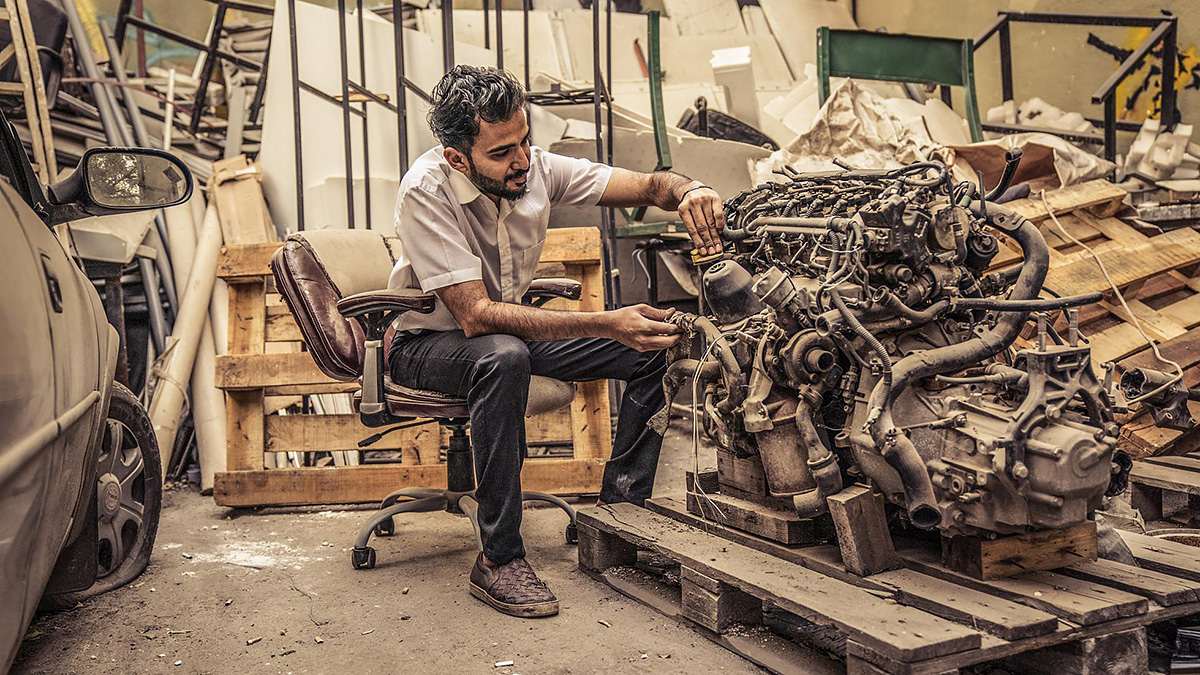
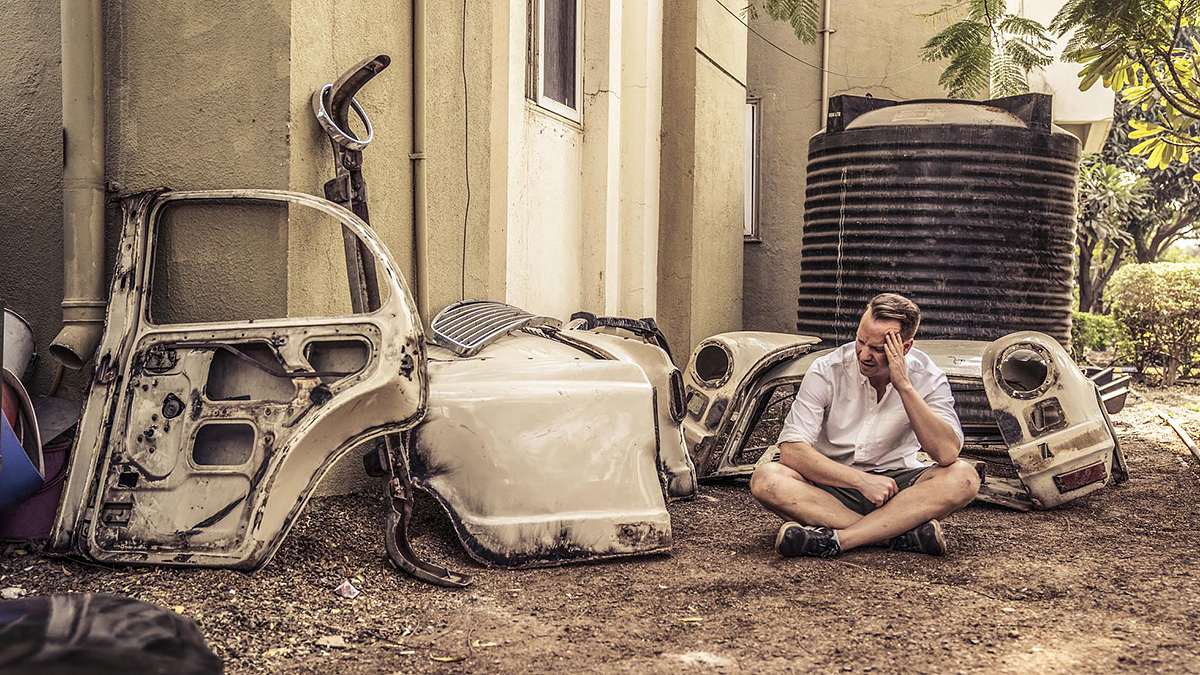
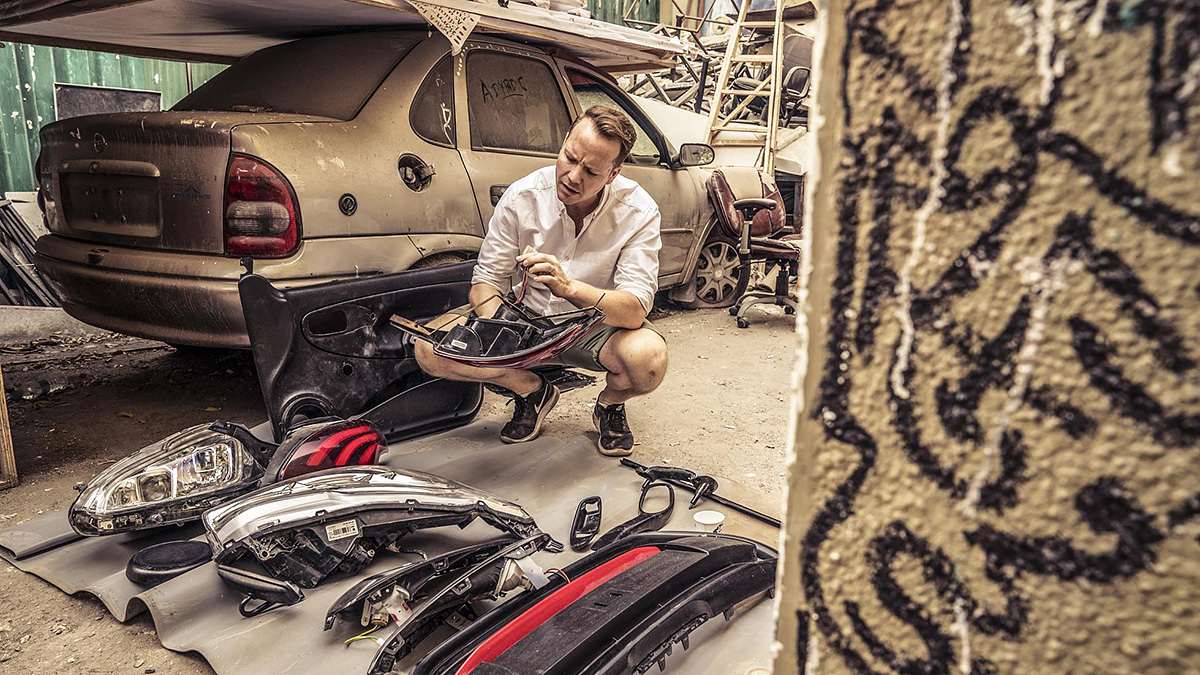
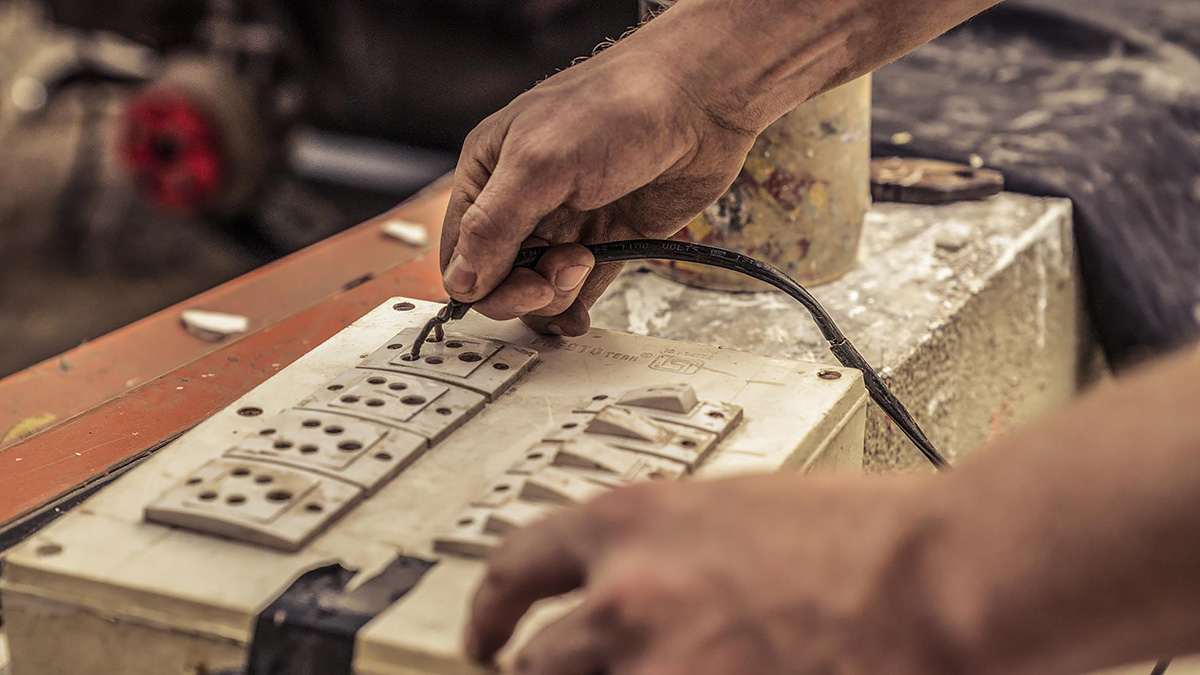
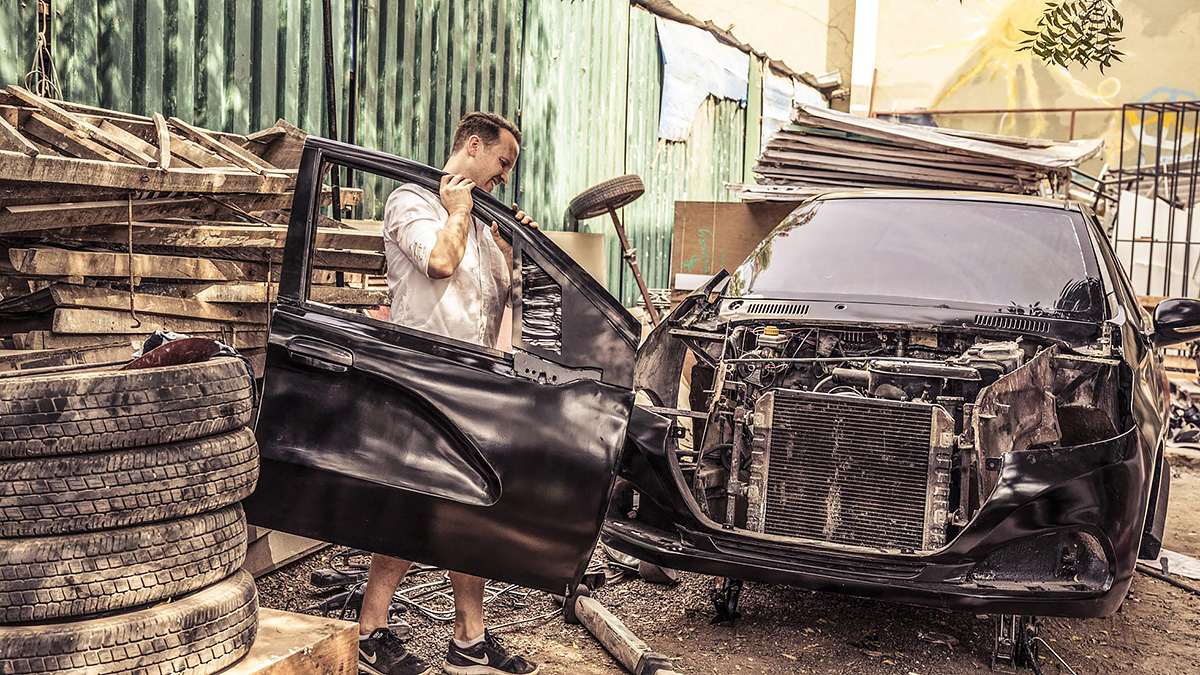
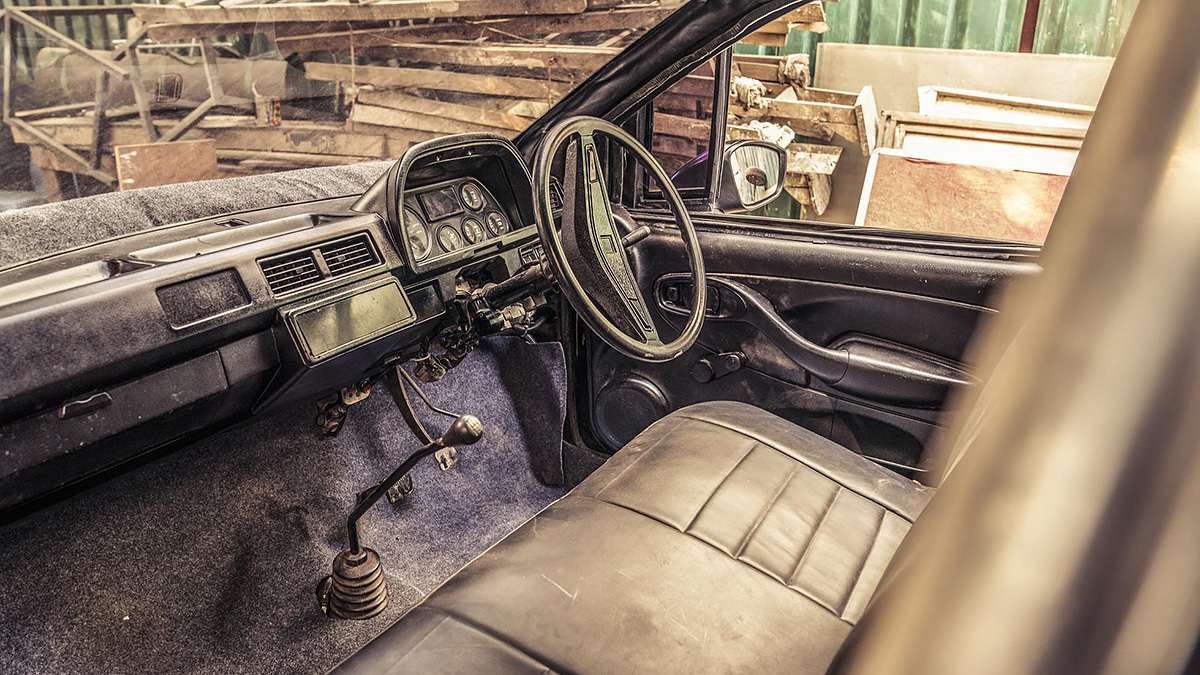
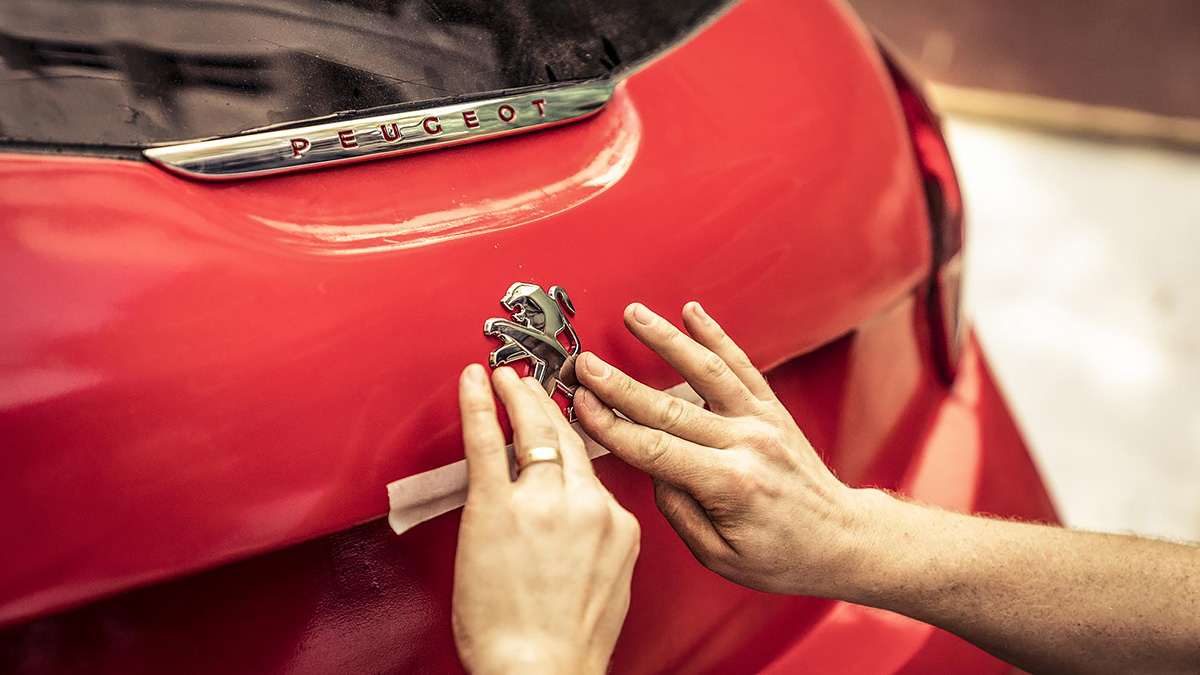
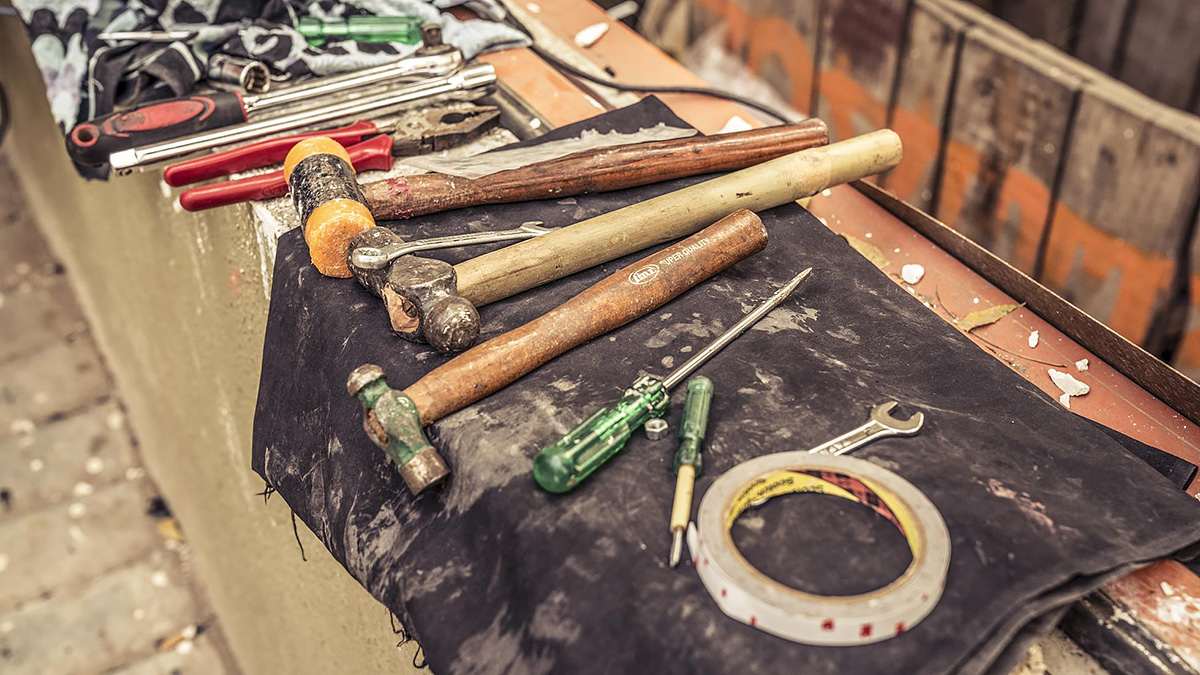
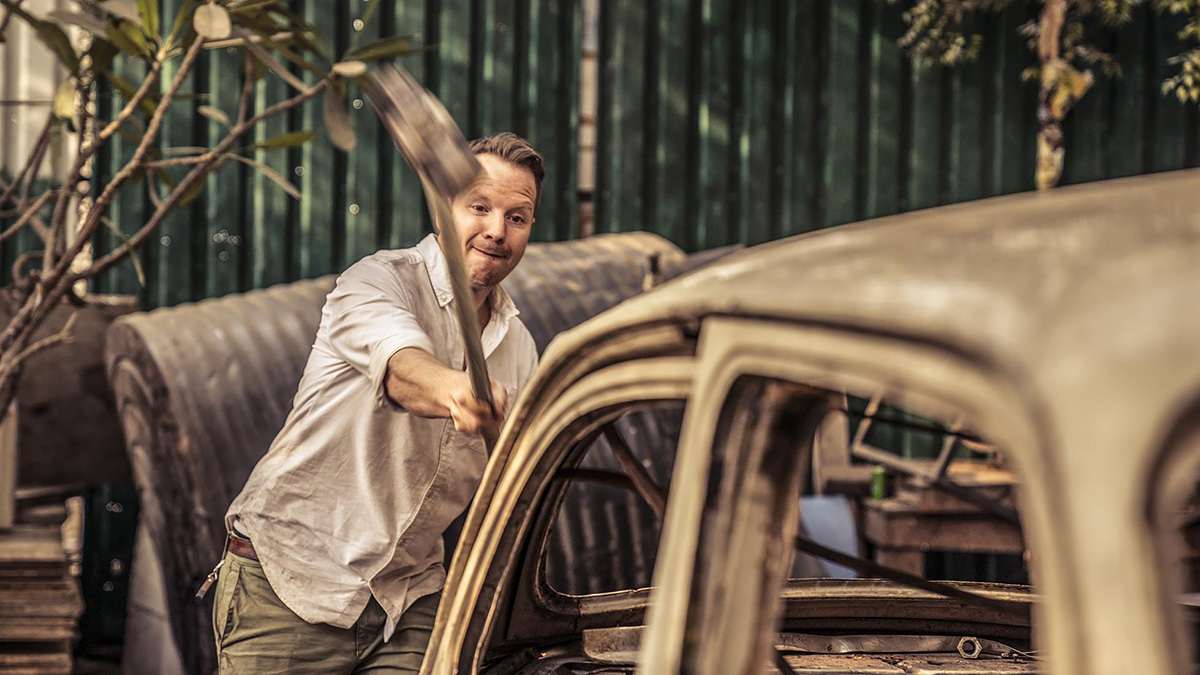
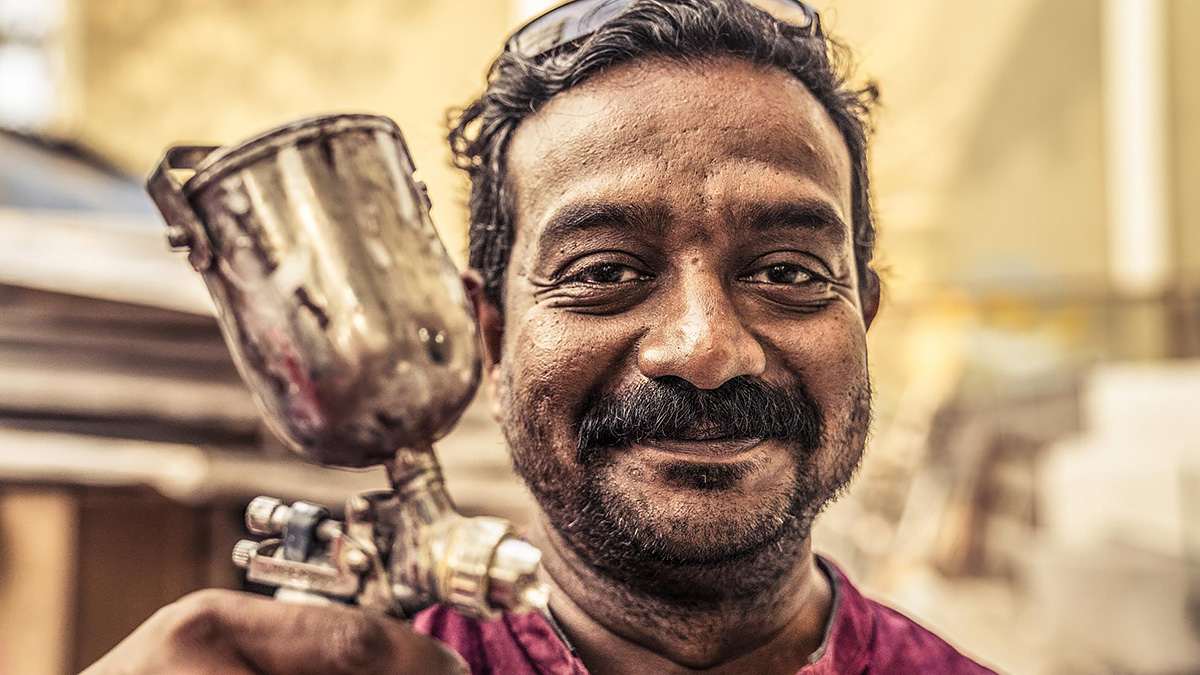
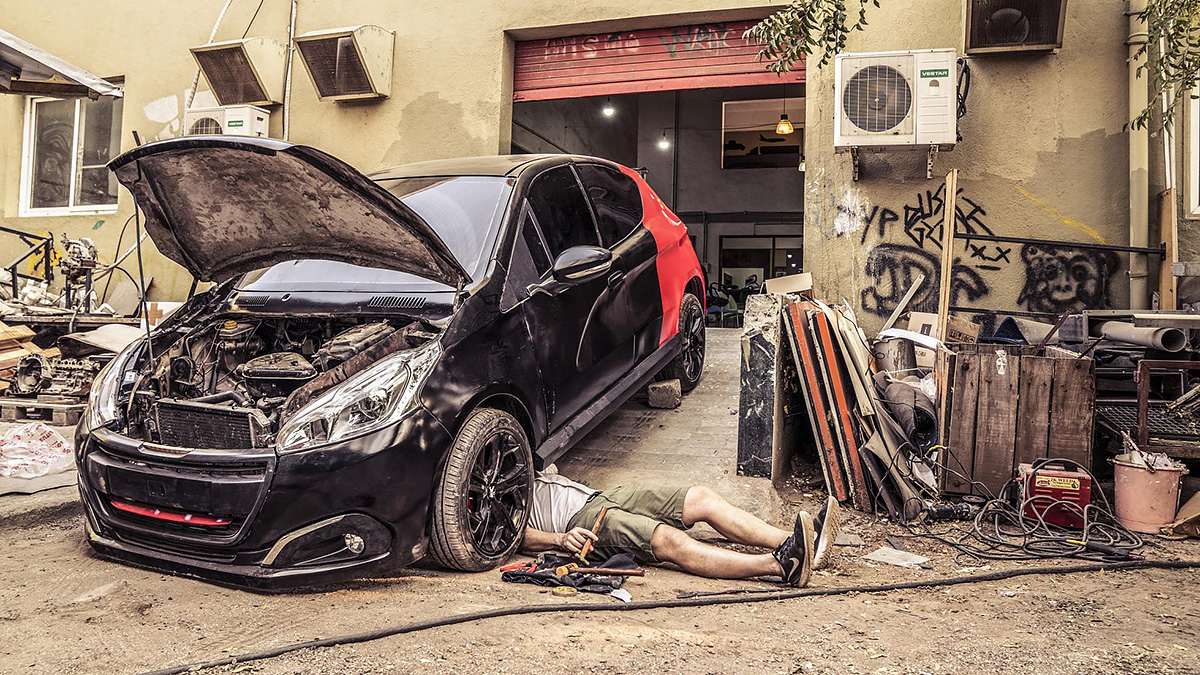
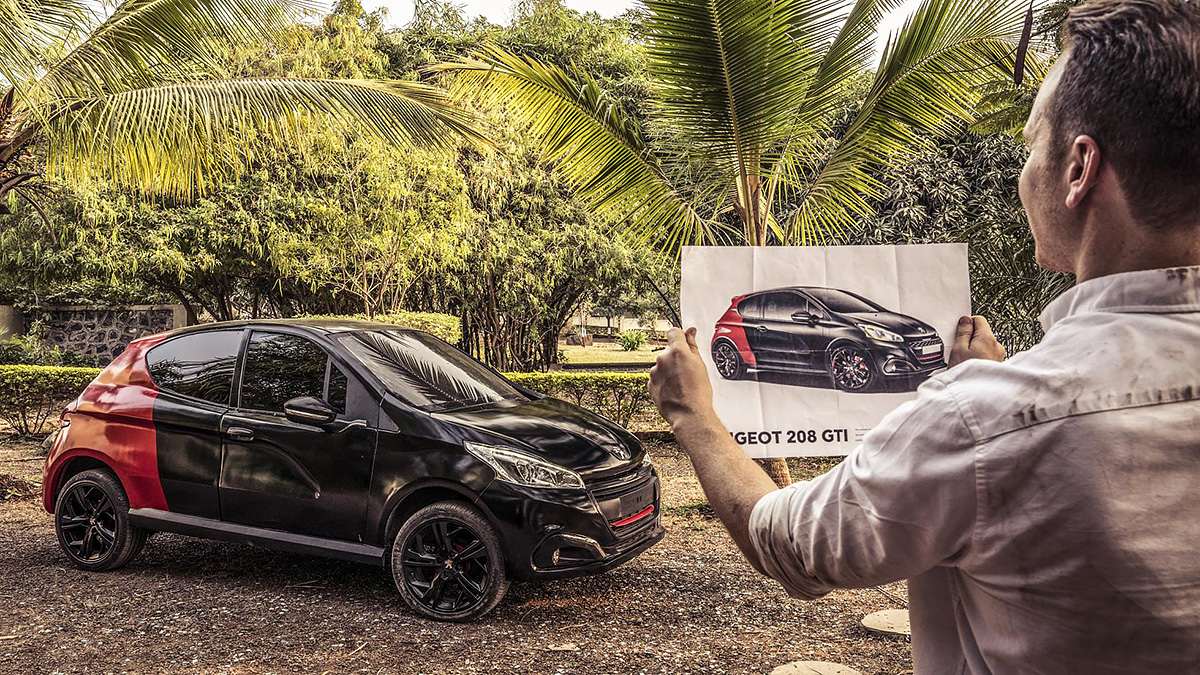
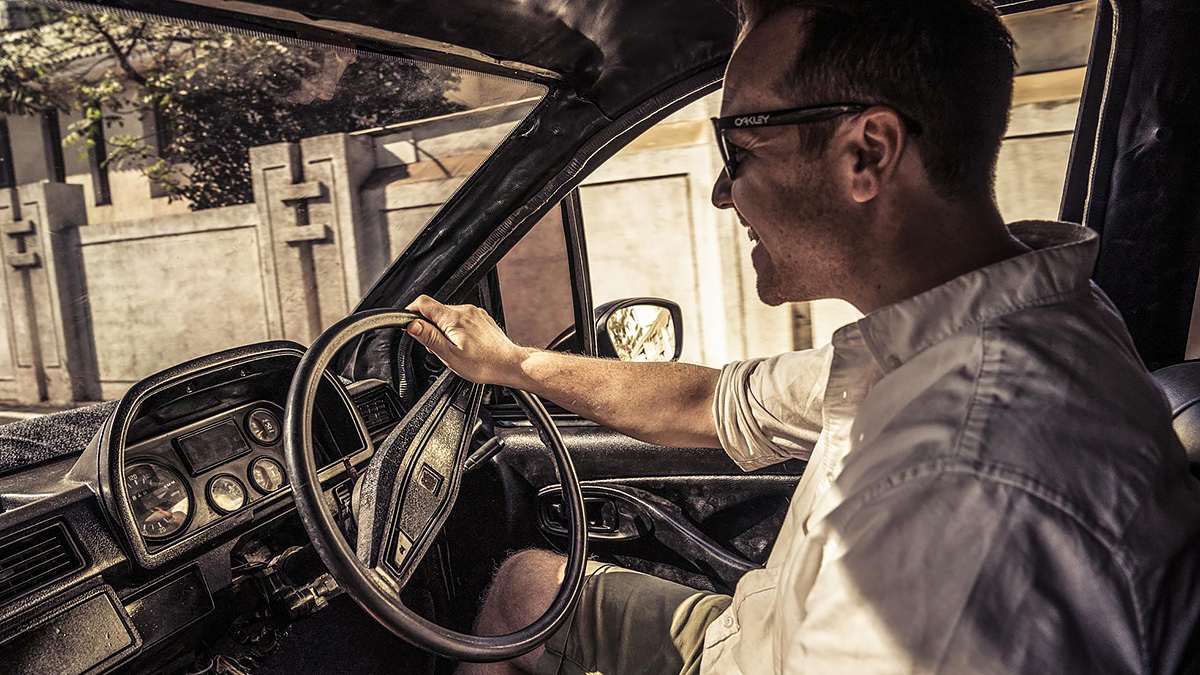
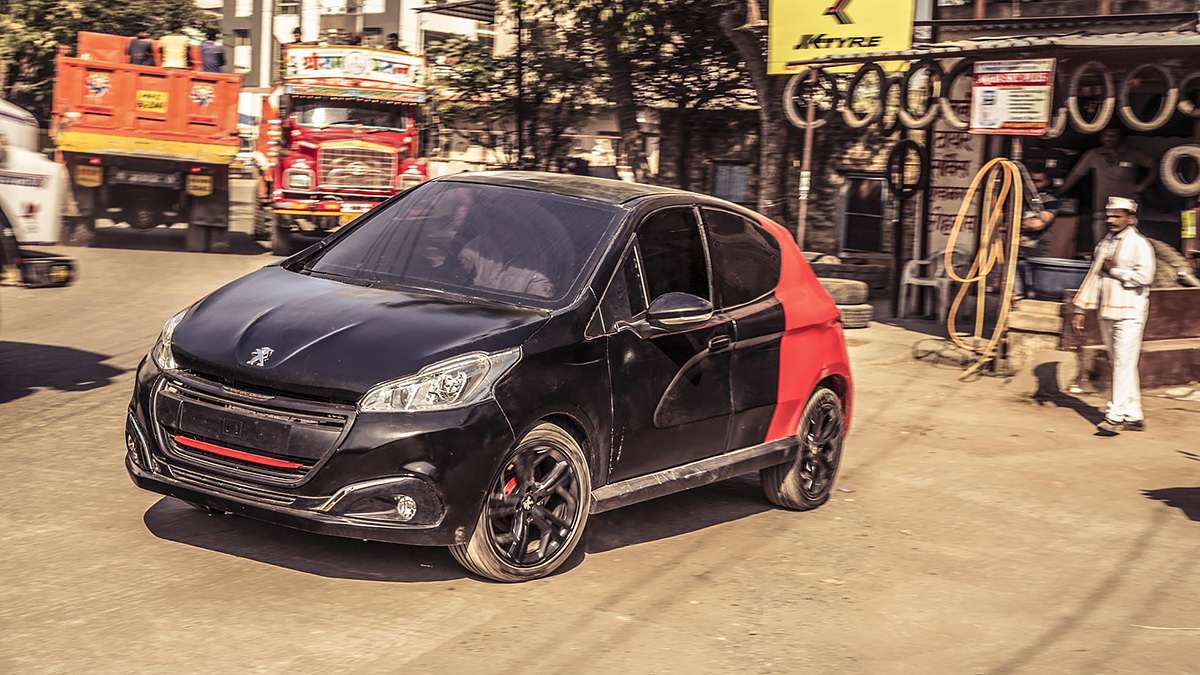
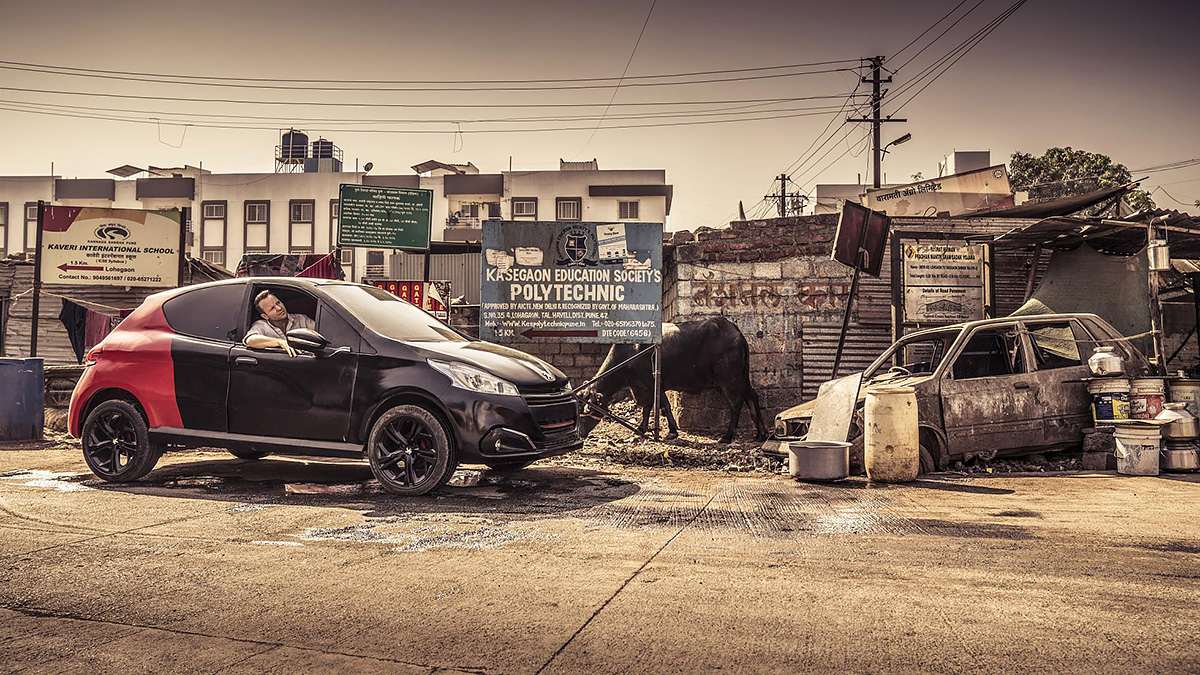
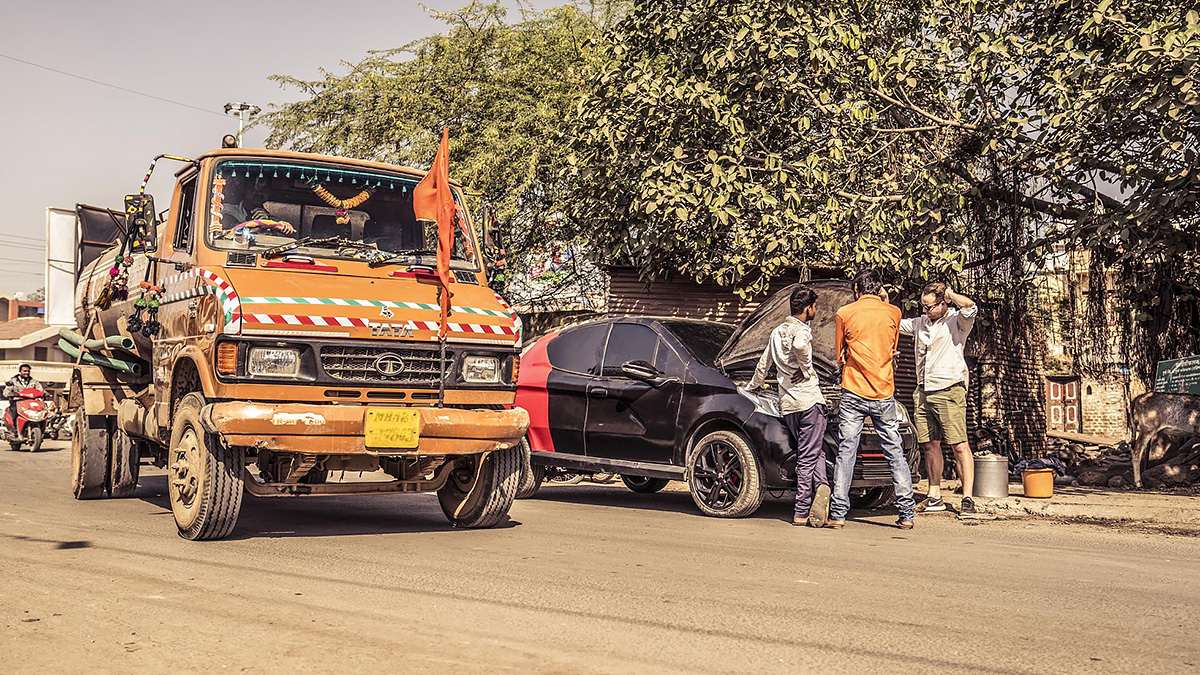
You’ll find your handy step-by-step guide to converting an Ambassador into a small French hatchback opposite, but here’s a flavour: they did it with bloody-minded determination, a boatload of fibre-glass, by enlisting an expert panel beater, endless late finishes and early starts, more welds than the hull of the Titanic, scant regard for any health and safety protocols and constant ingenuity, creativity and imagination, the likes of which we so often forget about these days when there’s technology to fall back on.
And the most brilliant part of all? Beneath the new frock and lipstick, this is still a functioning car – albeit one powered by a 75bhp, 1.8-litre Isuzu diesel engine that makes an erupting volcano seem refined. Even the lights and indicators are wired up. Although not strictly road-legal, a quick rattle to the nearest town shouldn’t get us in any trouble, so long as we don’t draw any unnecessary attention. Fast forward 10 minutes and I’m wrestling with the unassisted steering in searing 35ºC heat, swerving to avoid dustbin-sized potholes that might snap the rear leaf springs, and trying to execute a five-point turn without running over a cow or over-revving the engine. Meanwhile, Rowan runs in and out of traffic waving his lens around and generally causing a bit of a scene.

A crowd forms, the engine overheats, we pull over and pop the bonnet and accept that, despite being rear-wheel drive, the Pambassador’s hot-hatchy-ness is definitely just skin deep. TopGear, doing the vital research so you don’t have to. But enough road testing – there’s an advert to shoot. And if you thought Ashish and his team hit their creative peak during the build, you’ll love what comes next.
First, let’s address the elephant in the room. We don’t have an elephant. We tried, seriously, but finding a showbiz-savvy six-tonne mammal in India that meets European animal welfare standards is… tricky. Who knew? Instead, we agree on using a JCB for the bonnet-crushing scene. This is not my first choice. The original idea is to employ… how do I put this?… a plus-sized actor, but that’s quickly ruled out on moral and practical grounds. Besides, a JCB comes with the added benefit of doubling as a large yellow wall for the crash scene. Nobody seems remotely worried about sourcing one for a couple of hours, at short notice and driving it into the middle of a busy university.
By far our most pressing problem, though, is that our Ambassador has already been turned into a Peugeot. In the advert, an Ambassador features quite heavily in the first half. We need an Ambassador. In fact, we need two. One to admire and then drive in the opening scenes, and another to actually crush with the JCB, drive into a wall and hit with a sledgehammer. We sit around a bit scratching our heads before Ashish walks over to the remnants of our noble donor car, lying in a pile outside the workshop. He disappears and returns dragging a four-metre long metal box frame and announces all we have to do is weld the panels back together around the frame, stick some trolley wheels on the bottom and with some crafty camera work we have our rolling, crashable Ambassador. Pure genius.
Ashish and his team get to it immediately, rummaging around in a pile of wires, angle grinders and paint guns before emerging with a welder and shoving its exposed wires straight into the mains. The person in our office who fills in the health and safety form will be having a mild aneurysm right now, but out here it’s just the way things tick… how stuff gets done. It’s why the answer to every question, however bizarre, is automatically yes. Then comes the fun part: finding a solution by whatever means necessary.
It becomes an overarching theme on our trip, that anything’s possible if you’re prepared to go the extra mile, really challenge yourself and take 240V for the team. During a night shot we need a bit more light. Not an issue. A single bulb on a wire appears from nowhere, is slung over the branch of a tree and wrapped in cardboard to create a soft, diffused glow. It would take 18 lighting engineers a week to achieve the same effect back in the UK. Later, a swarm of enraged bees decide to attach themselves to a branch above our heads. We retire to a safe distance and watch as Ashish and the team take turns in smoking them out… by setting fire to a cardboard box directly underneath. Fire hazard? Nah, it’ll be fine.

The panels now back in some semblance of the car they once belonged to, it’s time to hit them with a large hammer. Sadly, I forgot to pack one. Ashish marches off and returns with the head of a sledgehammer. But no handle. Cue more welding to attach a metal rod. I mean, what could possibly go wrong?
Against all odds, and without a bee sting or a single blunt force trauma incident to report, we get all the shots we need in the bag. Well, almost all – we’re still missing an actual working Ambassador to star in the opening scenes, a rather crucial omission. After scouring the classifieds for days, phoning every car rental company from Mumbai to Delhi and coming up dry, our cameraman makes noises about a family friend who owns one, but no word on whether he can make it down. With a hour of daylight left, we’re all but resigned to our fate, when a pristine white Ambassador trundles around the corner and beeps the horn. We and all the students we’ve roped in as extras cheer loudly in unison. Yep, the cameraman knew his friend was coming all along, but wanted to string us along for comic effect.
The results? Well, you can watch the remake video (and a second film looking at the brilliance of the Pambassador in more detail) for yourself here. As for the car’s fate, it’s currently being decided whether it stays in India as a showcase for the University, or returns to France to end up in La Reserve. I’m voting for the former, but either way the seed has been sown and ambition is high. Ashish tells me the student’s next project is turning a Vauxhall Corsa into an ode to the Lancia Stratos HF Zero.
It’s funny – this project started out all about the car; was the conversion even possible? How long would it take? Are we inadvertently about to kickstart a coach-built Ambassador craze? But it ended up being about the people. Ashish, Kushal, Parth and Sidharth, I salute your determination and skill. And for saying yes first, then worrying about the how.
